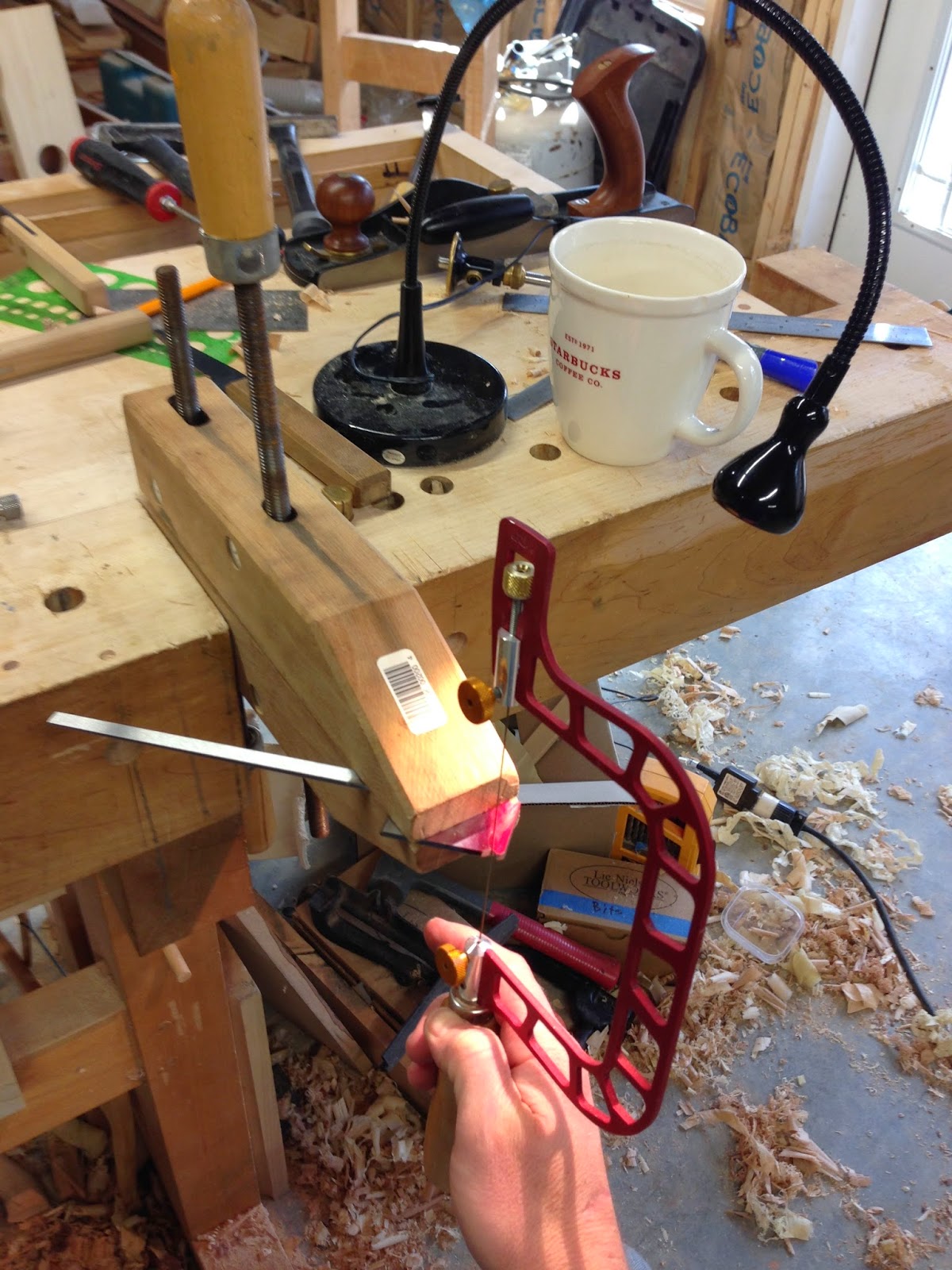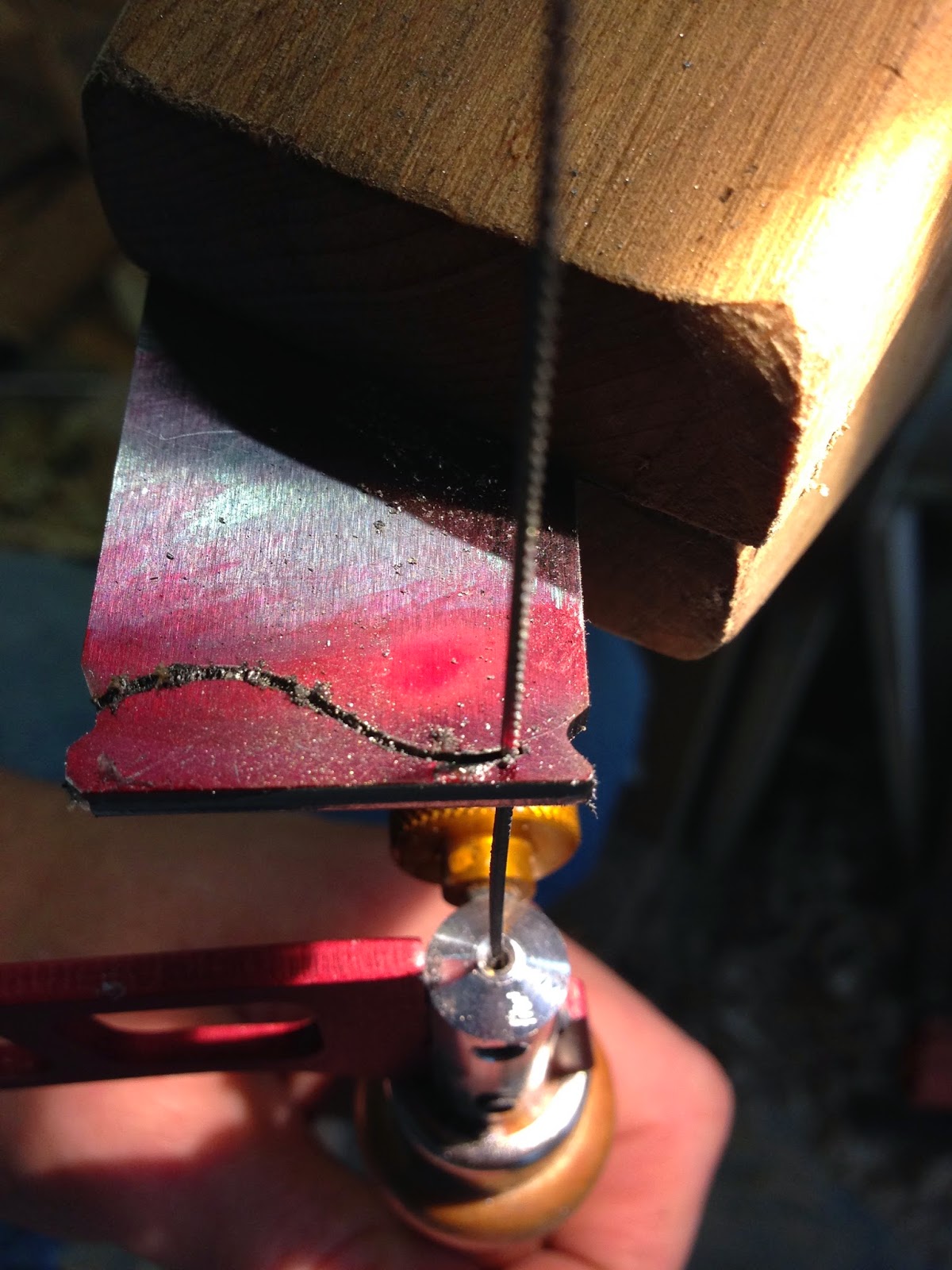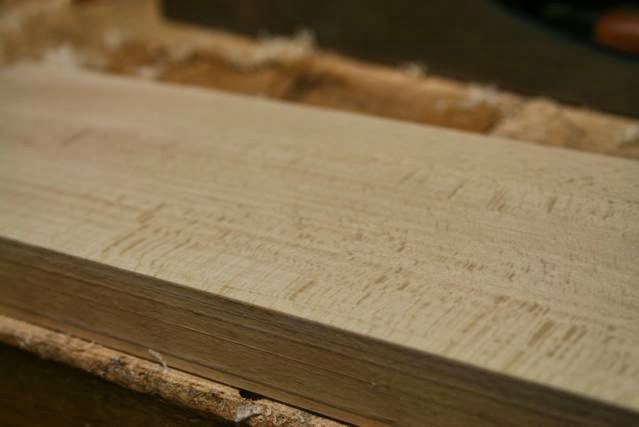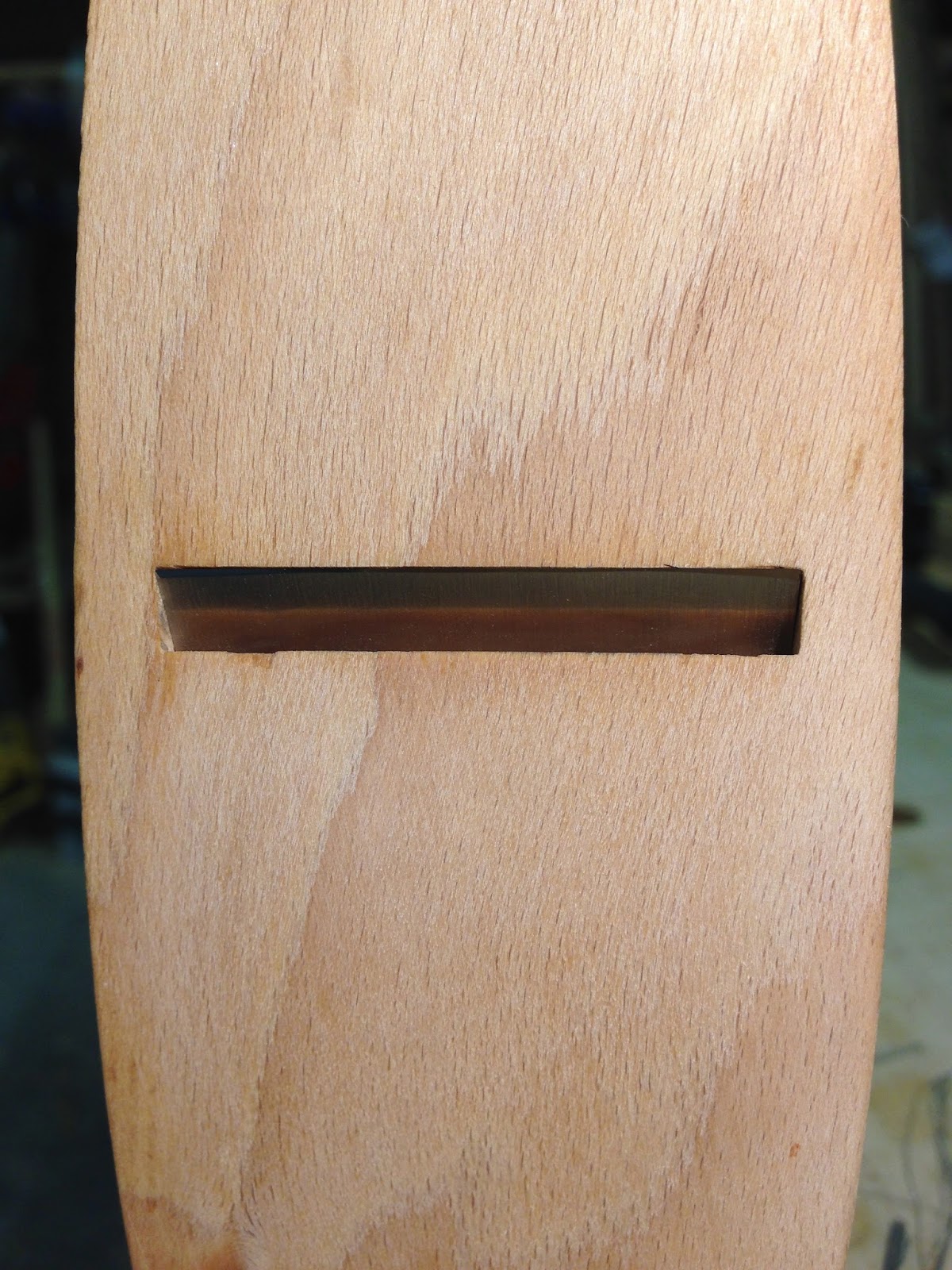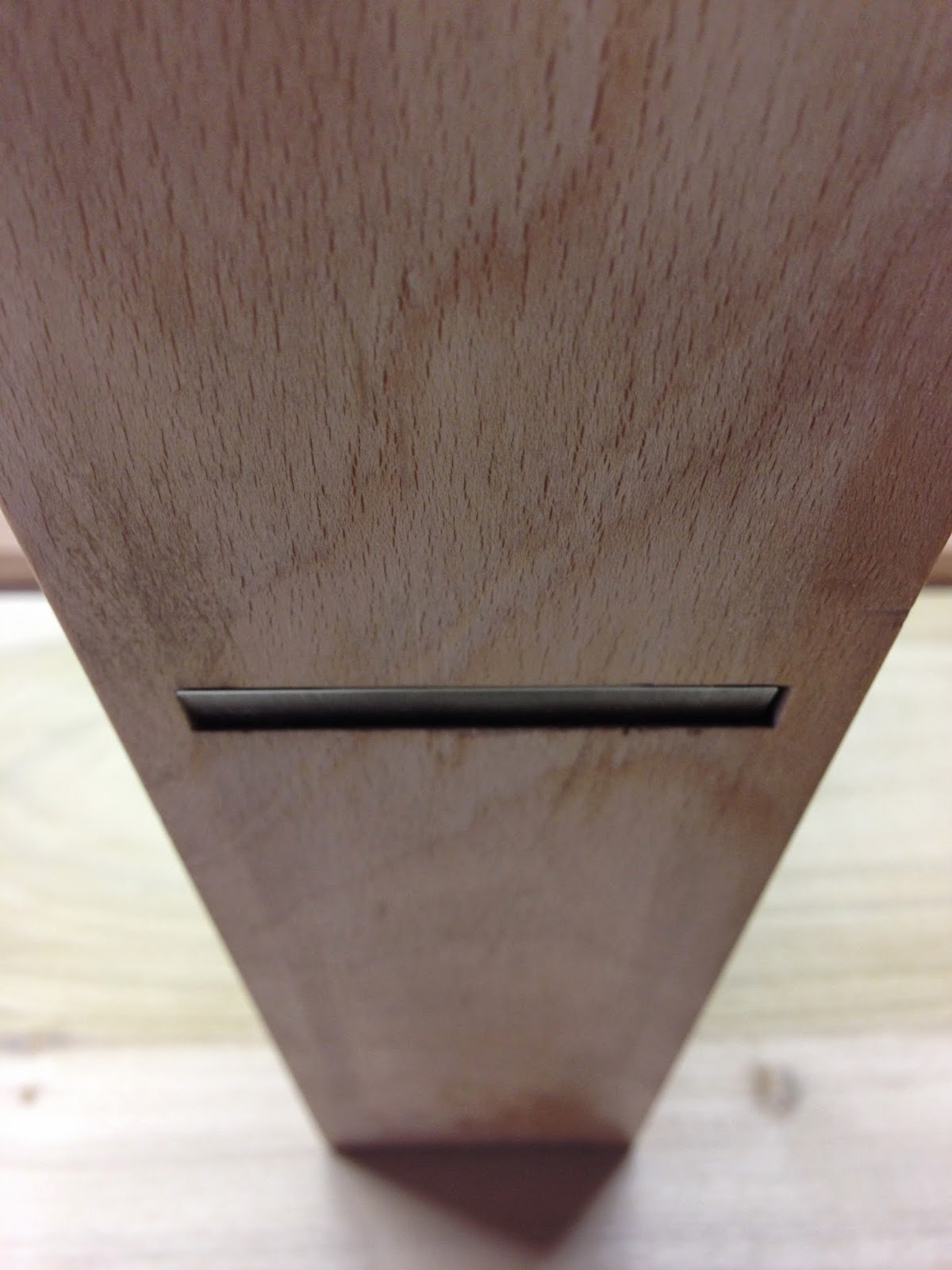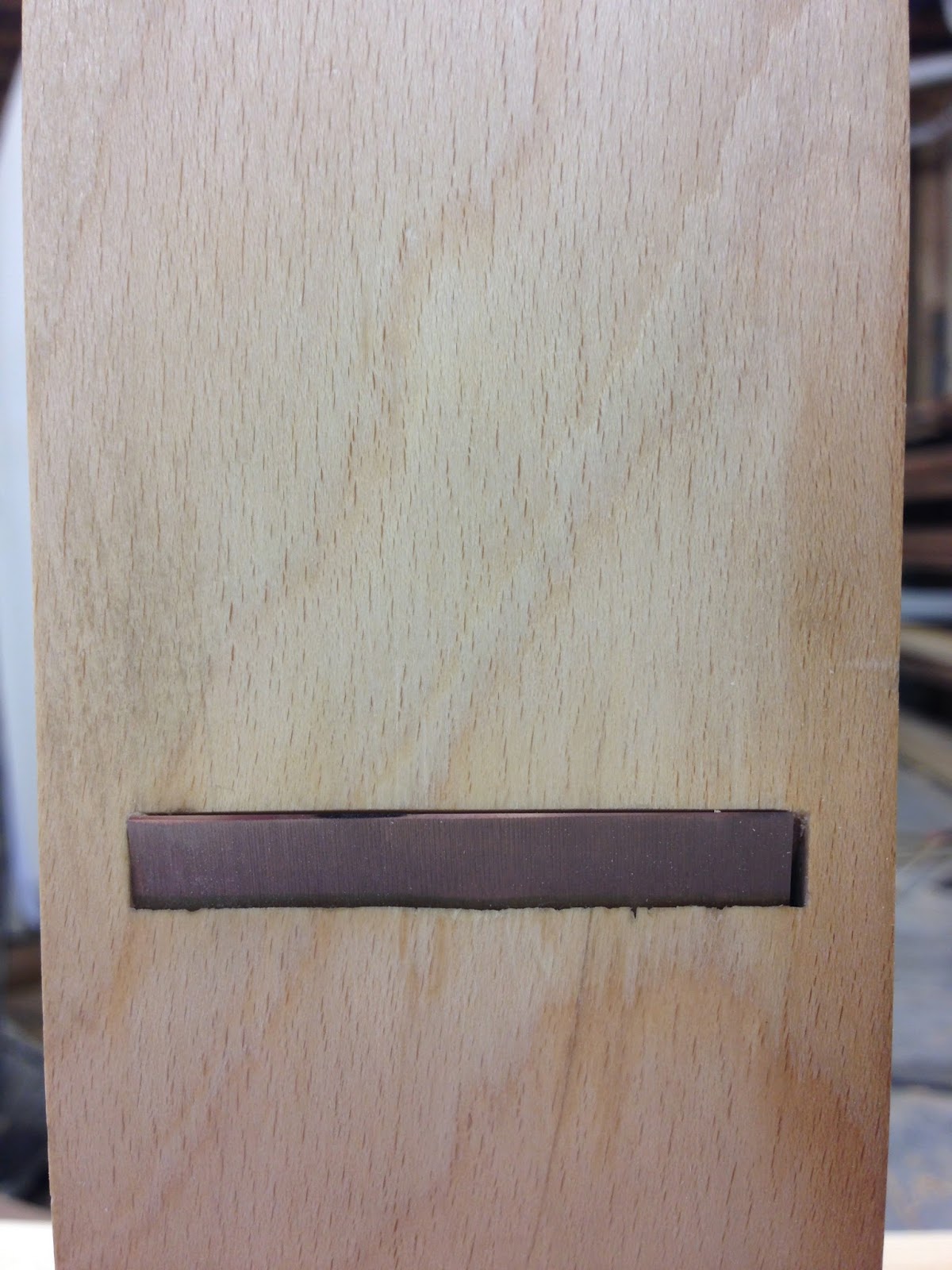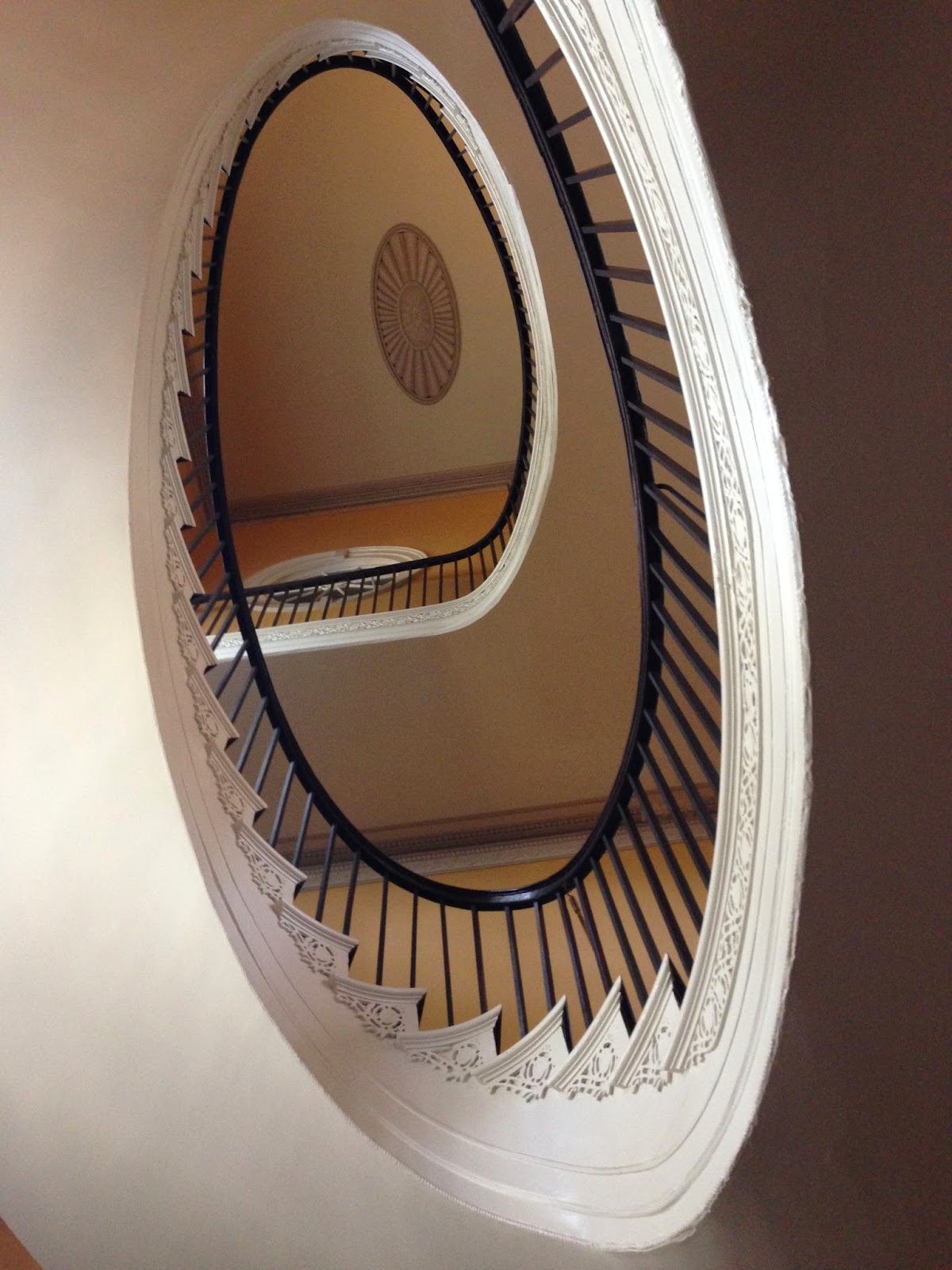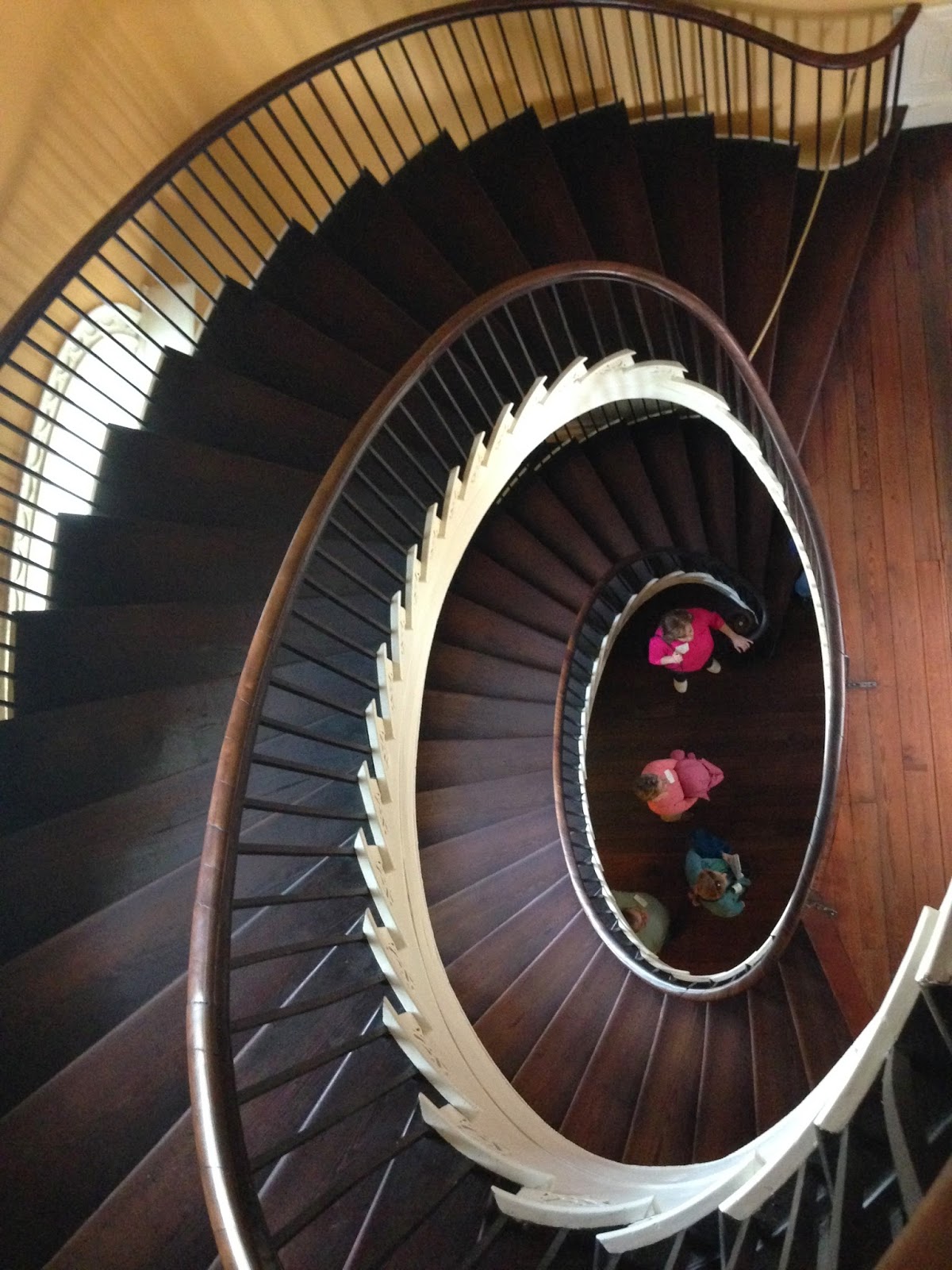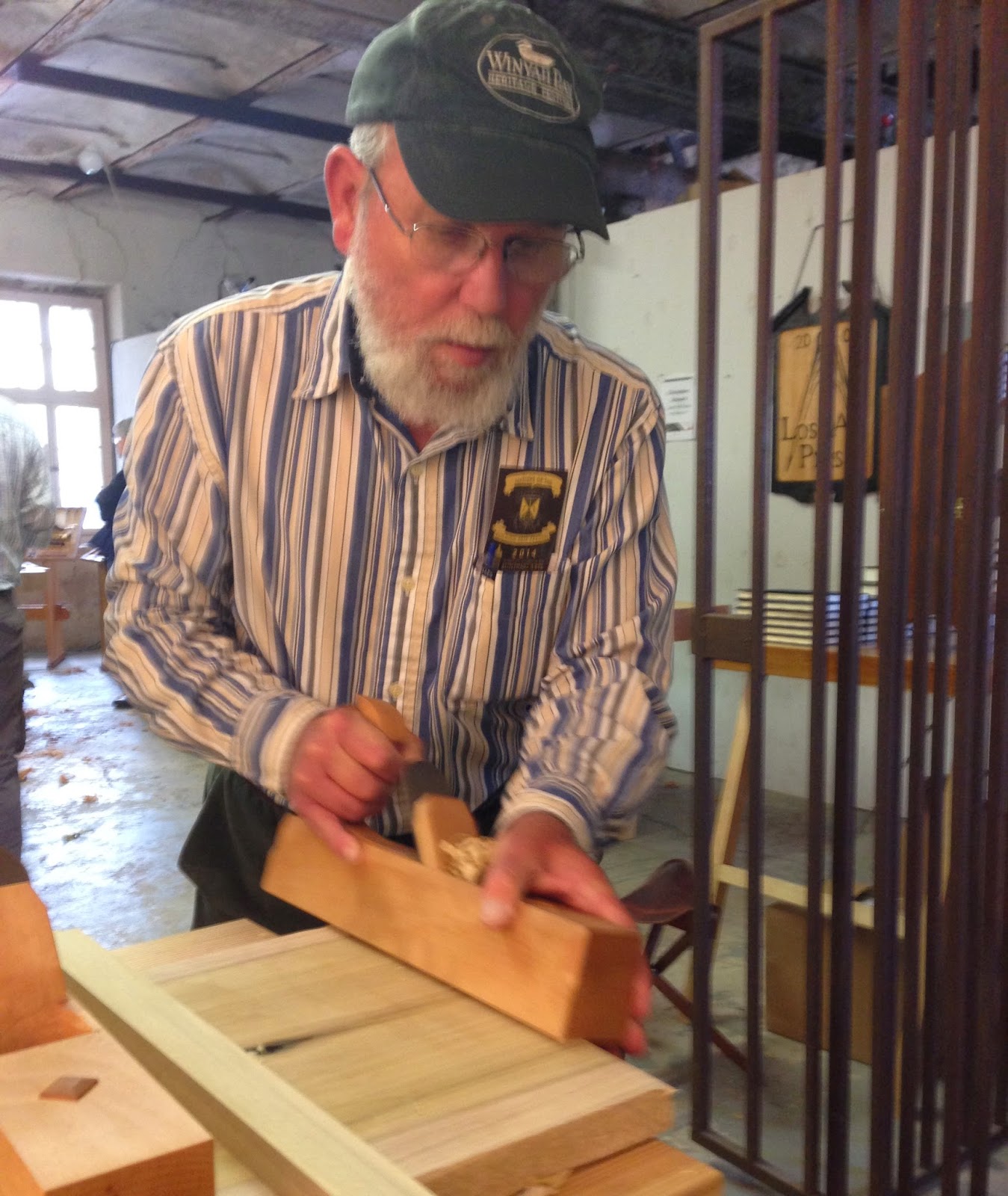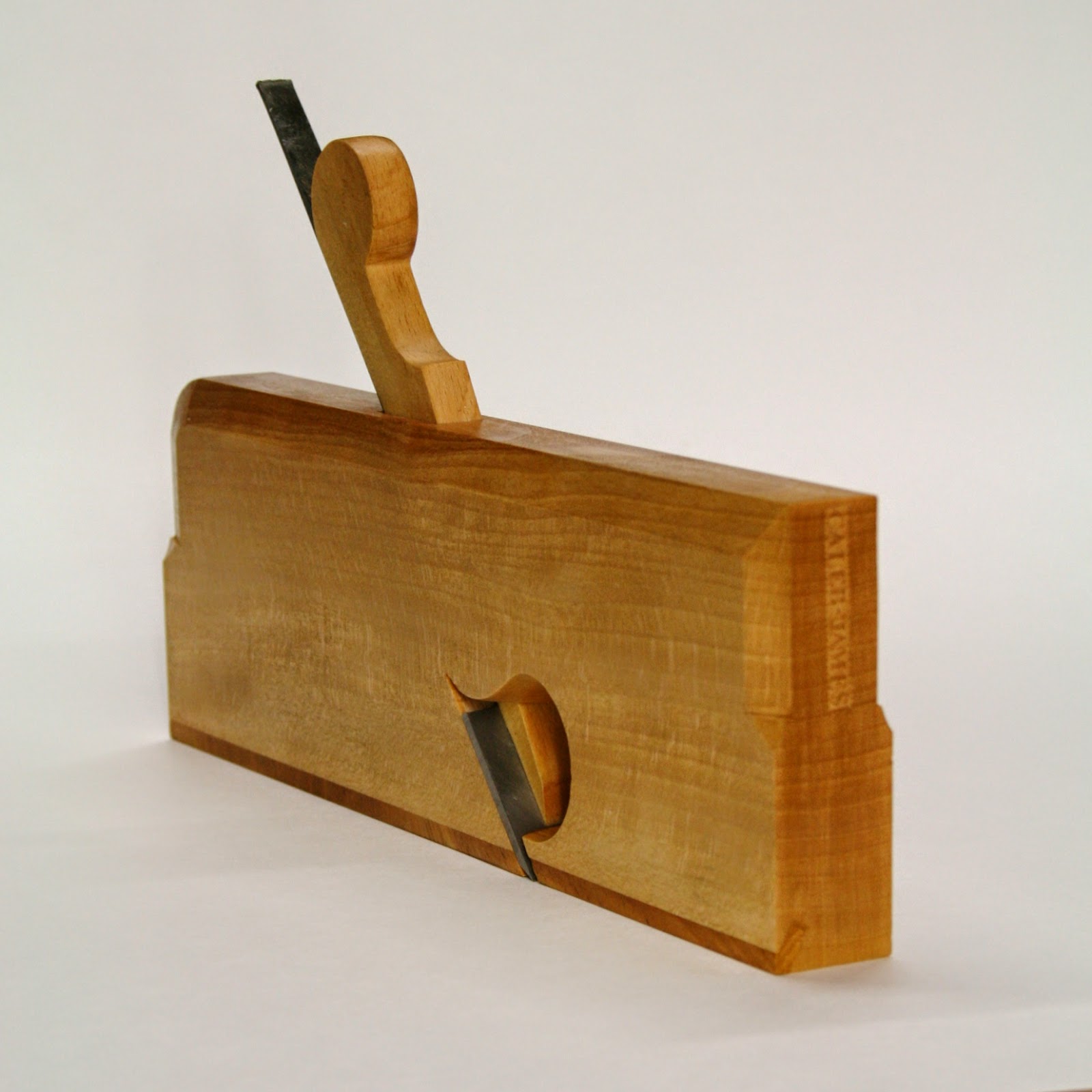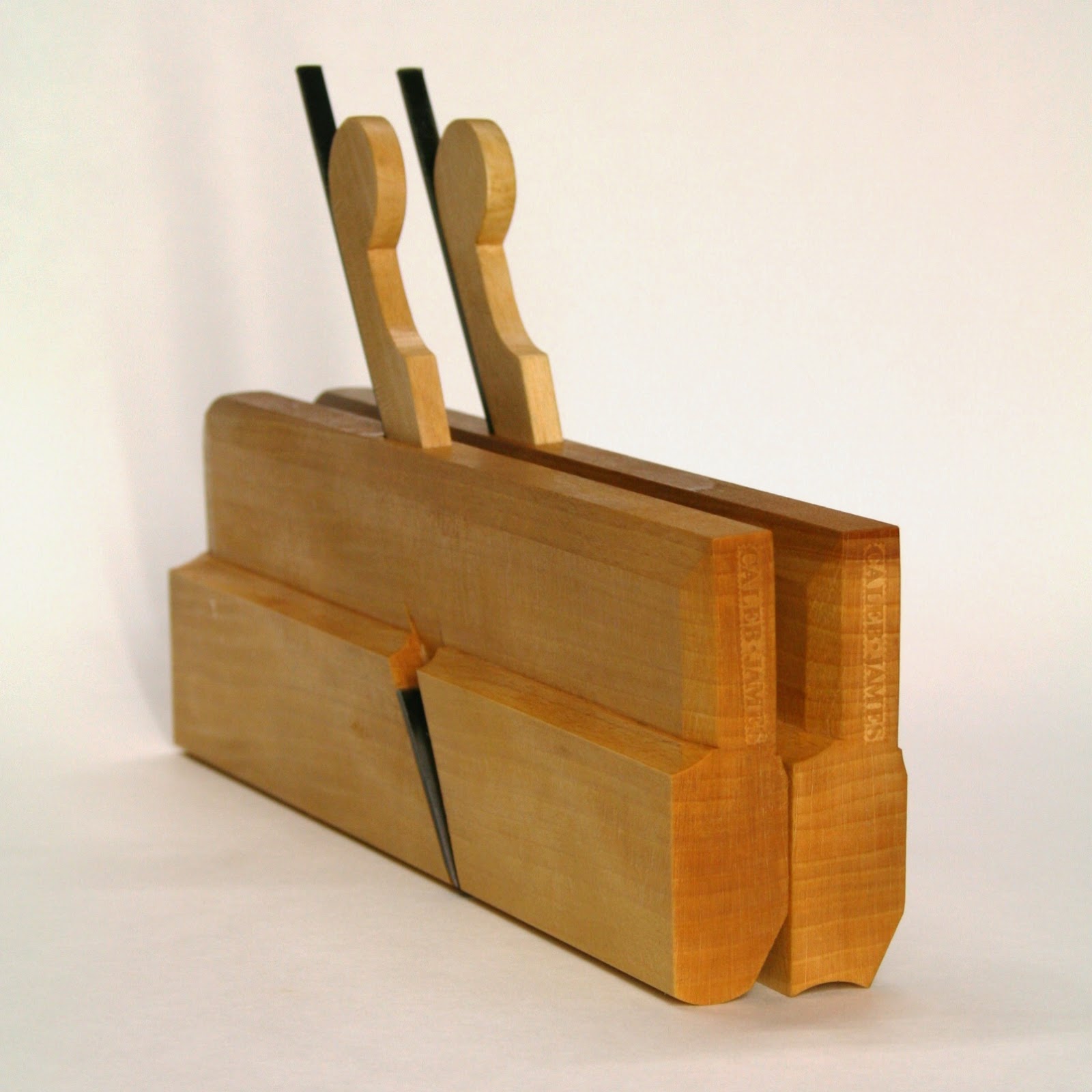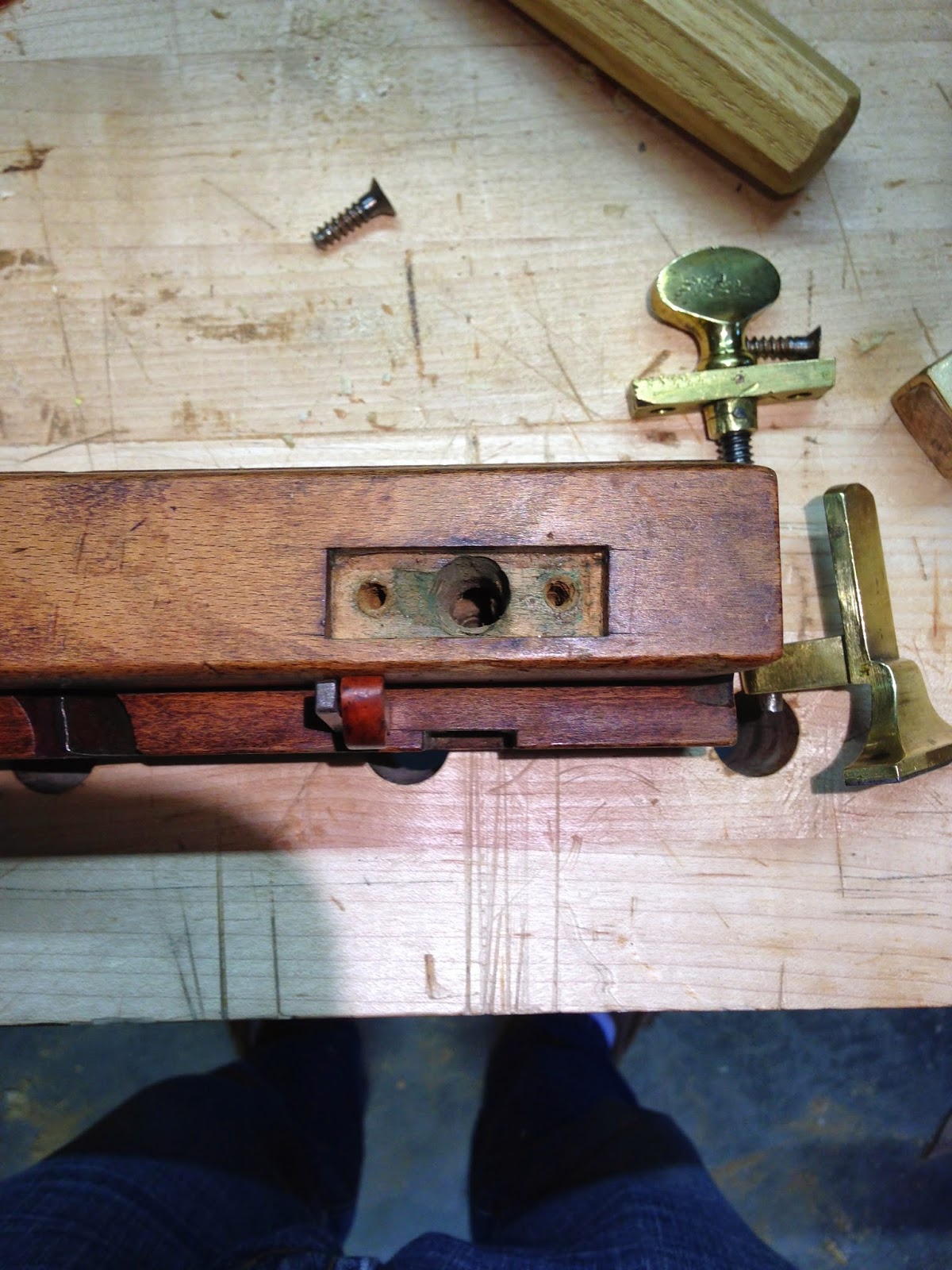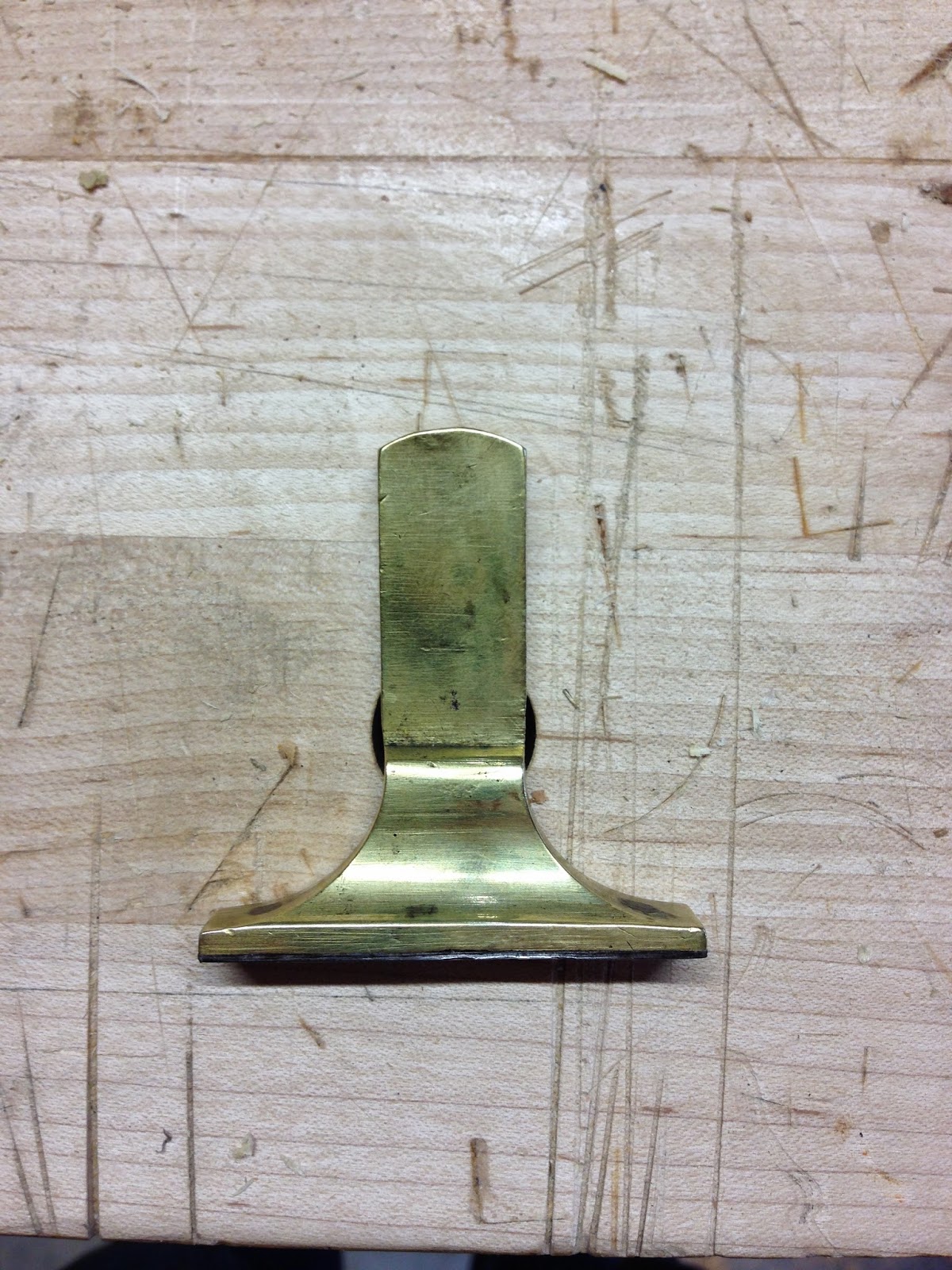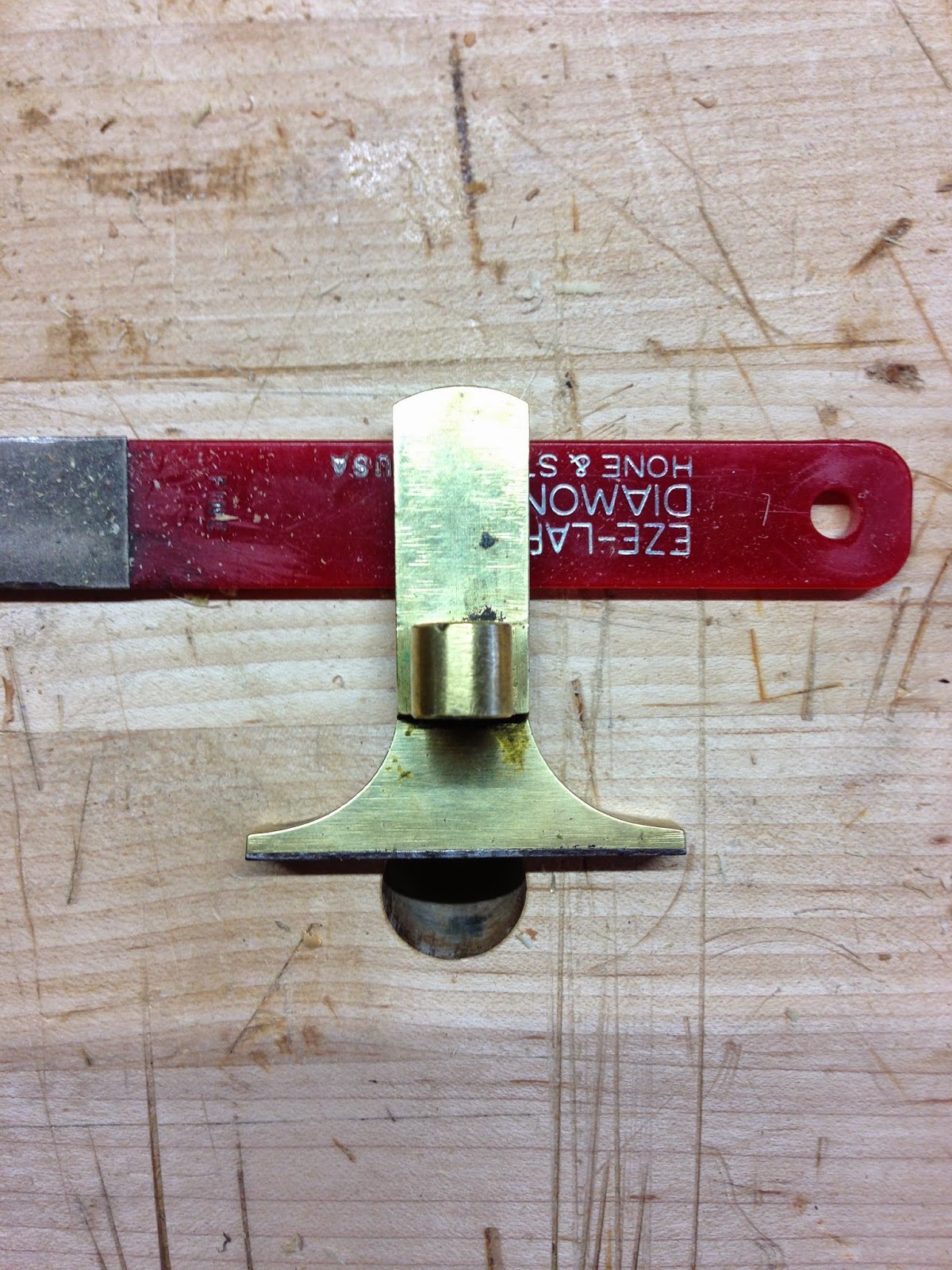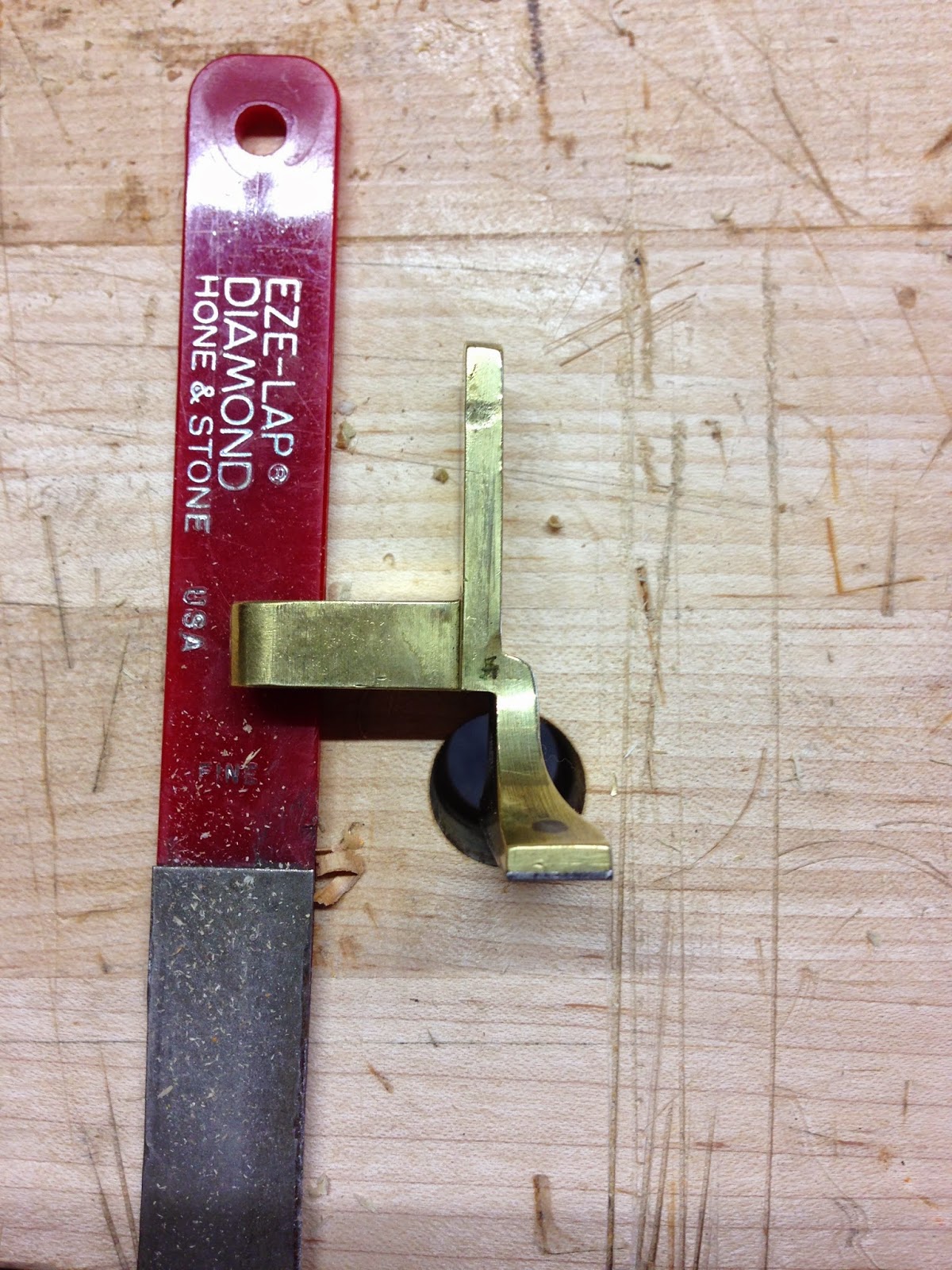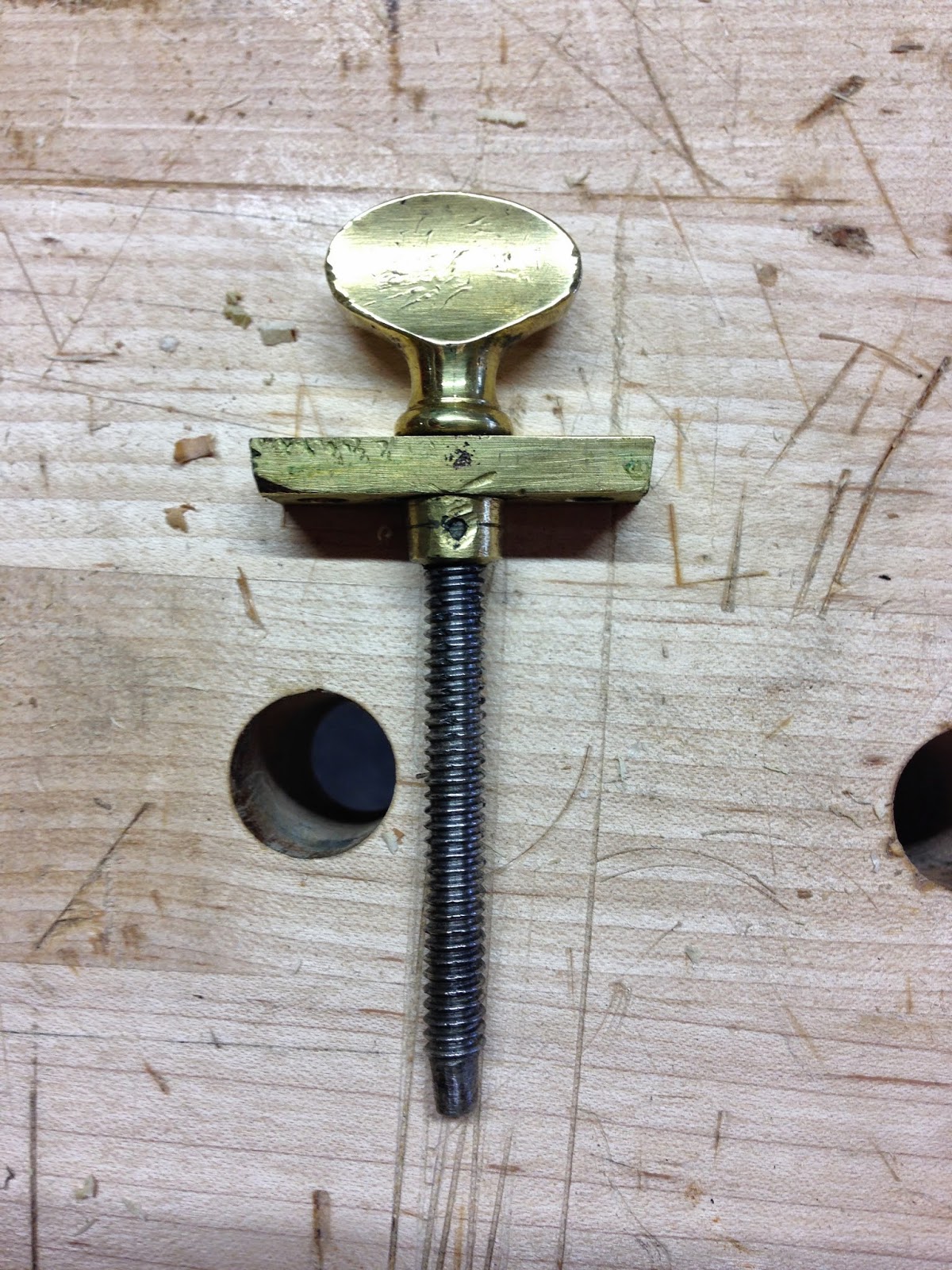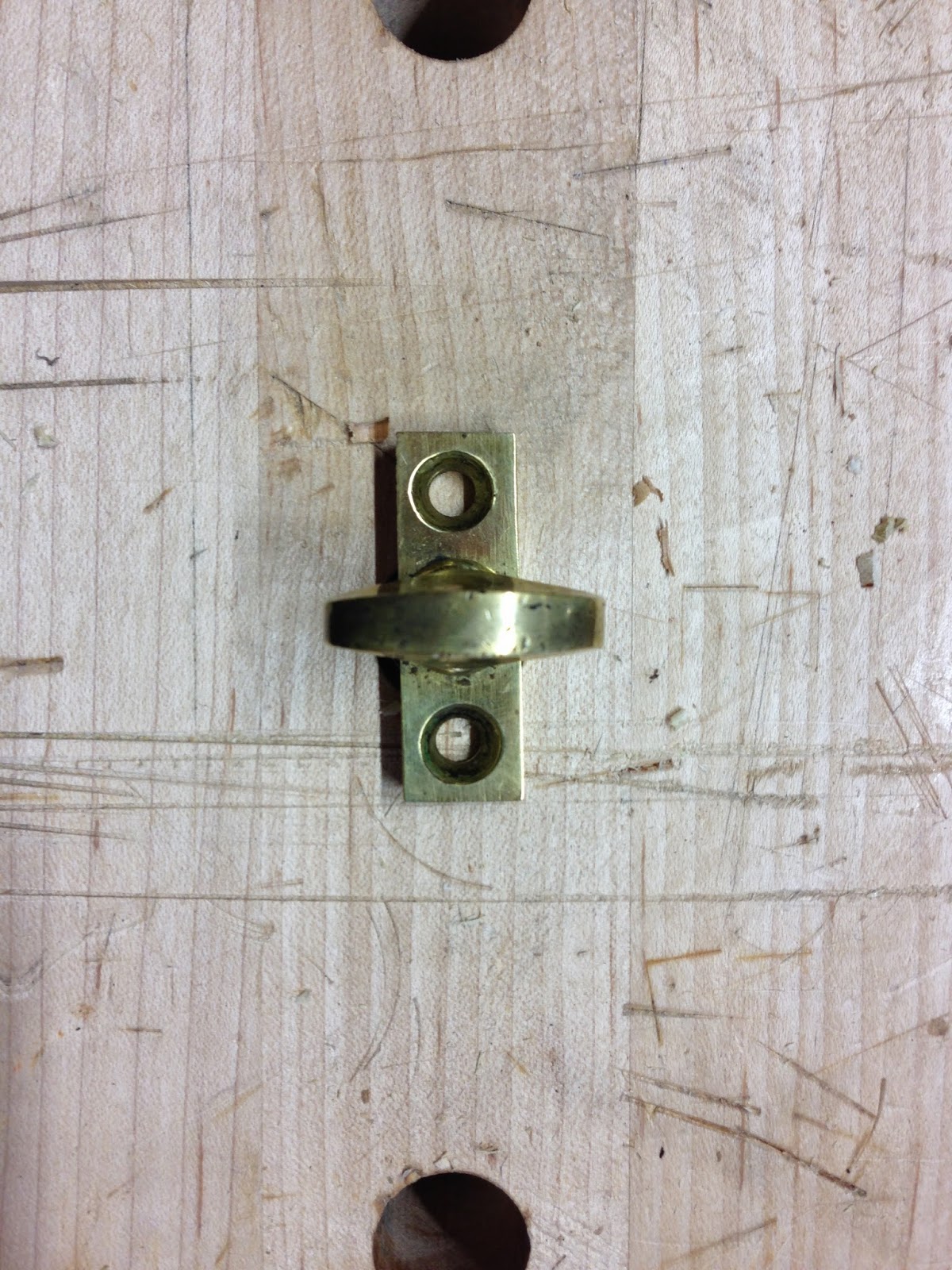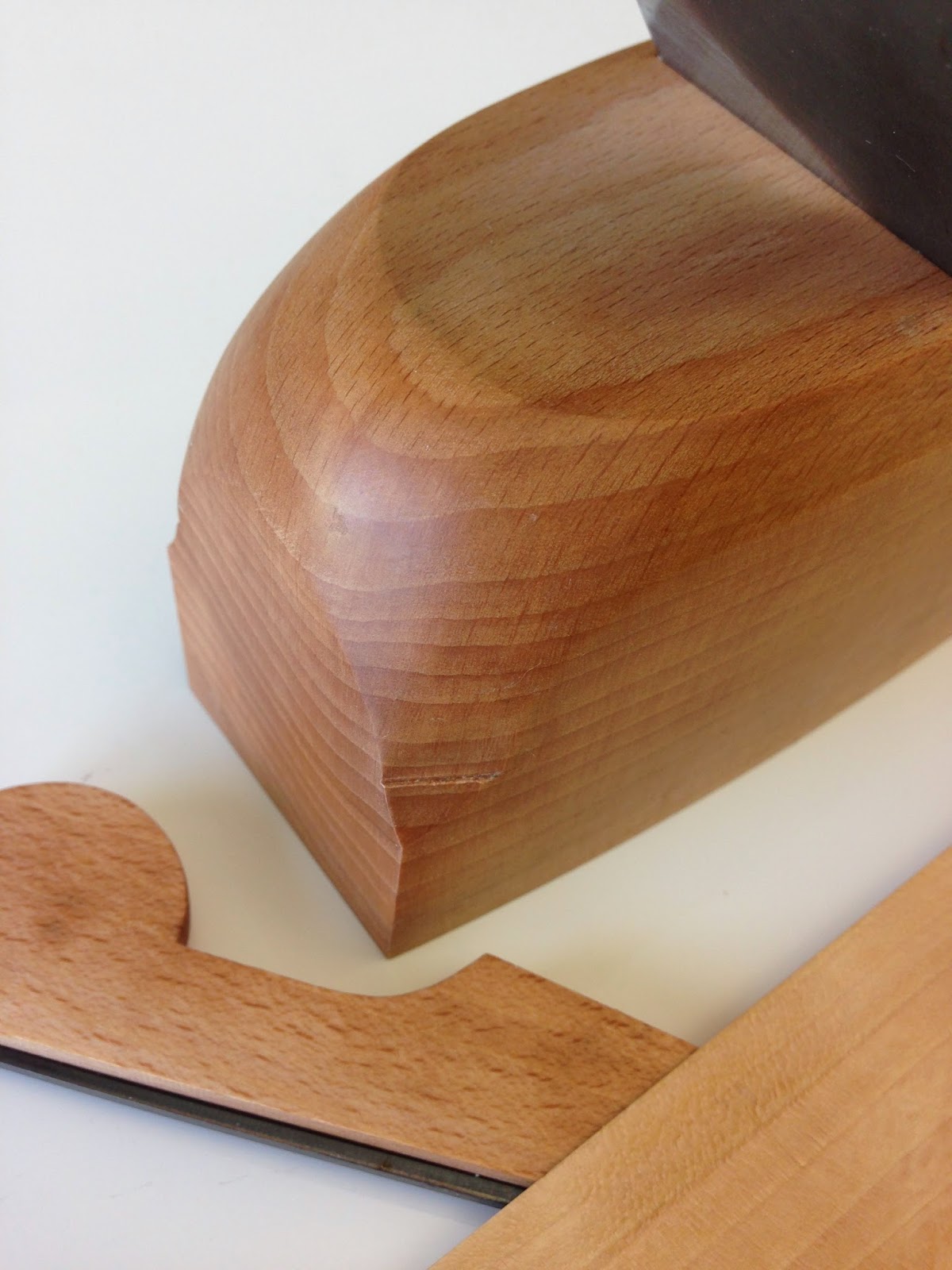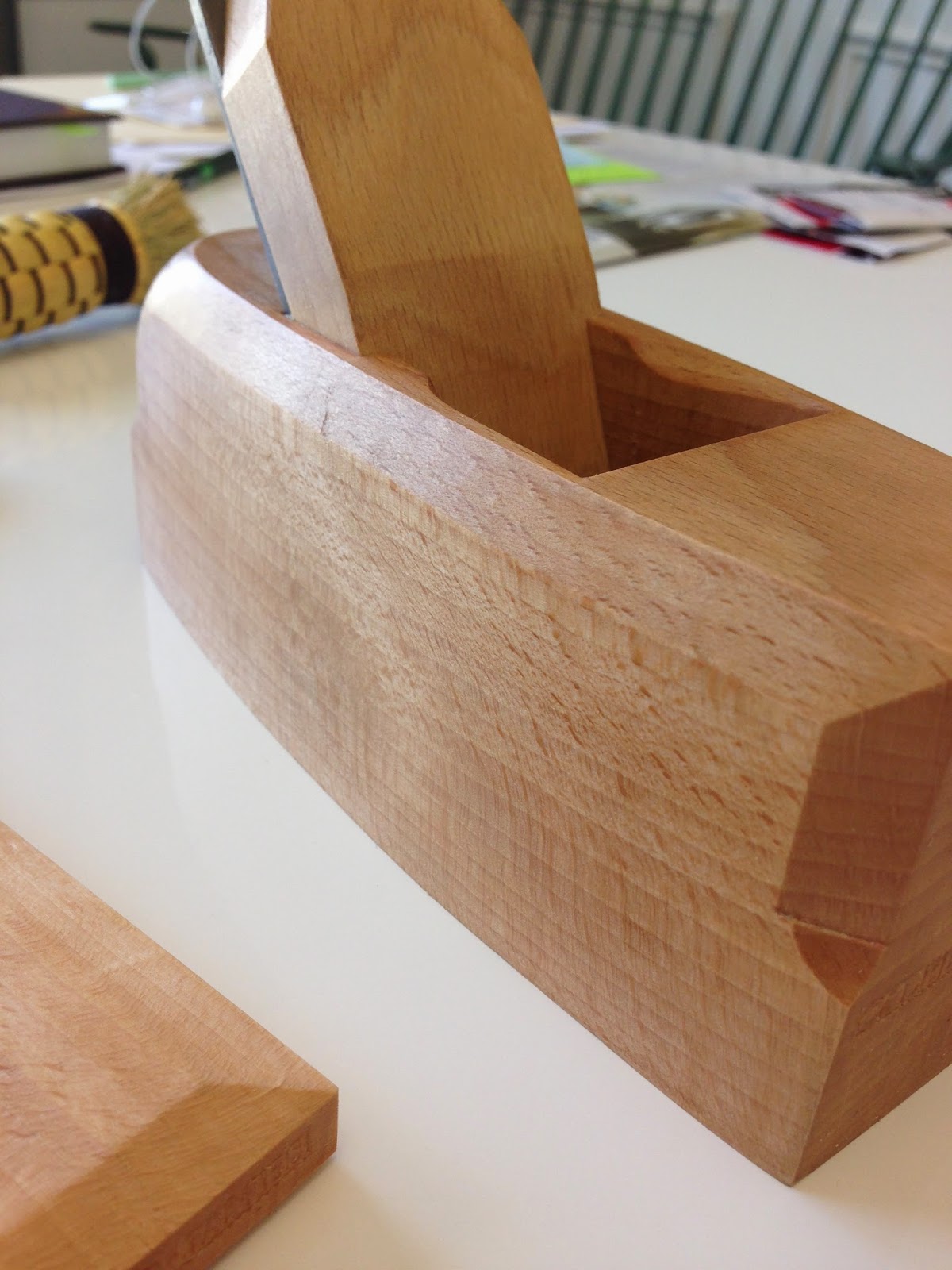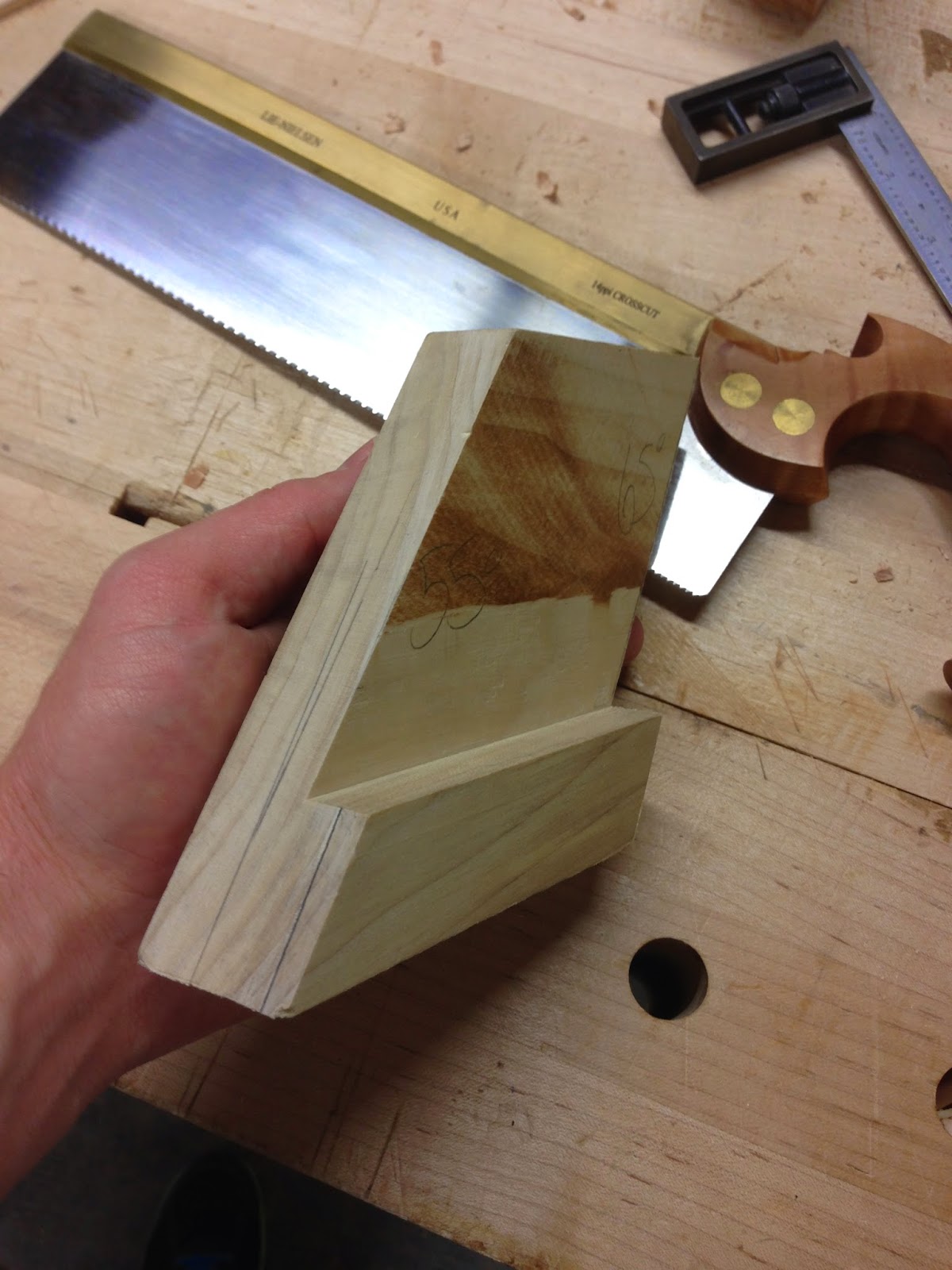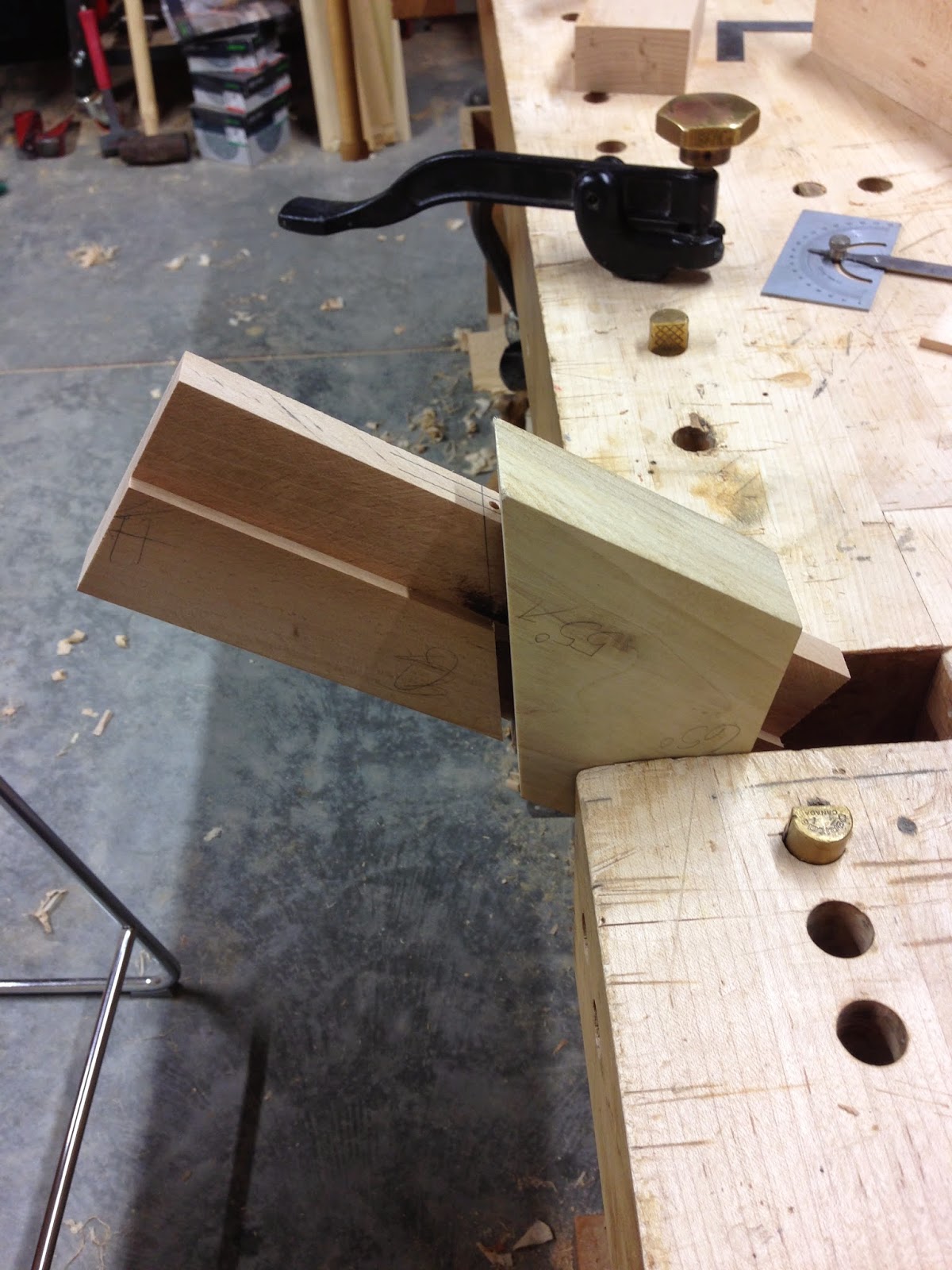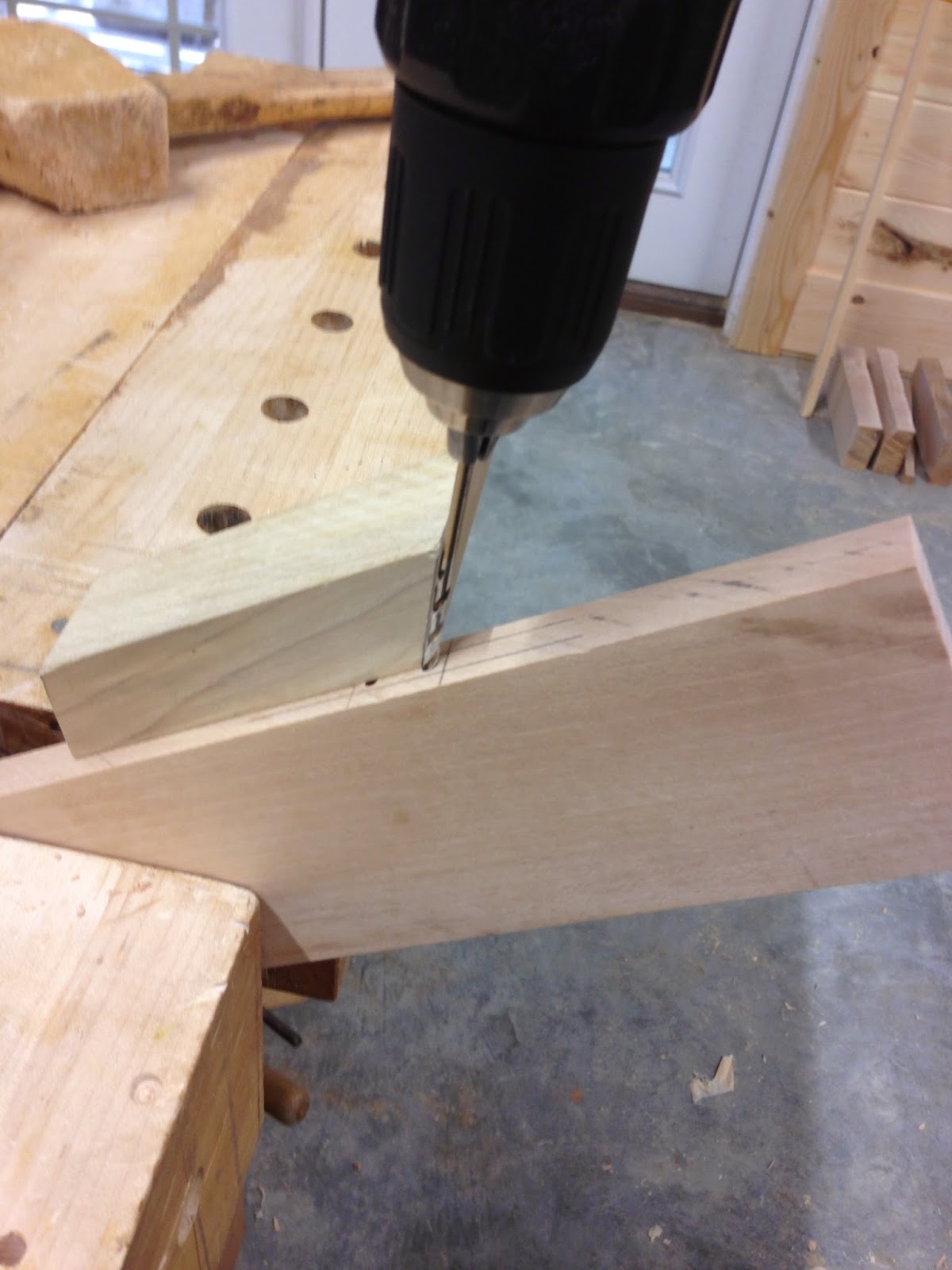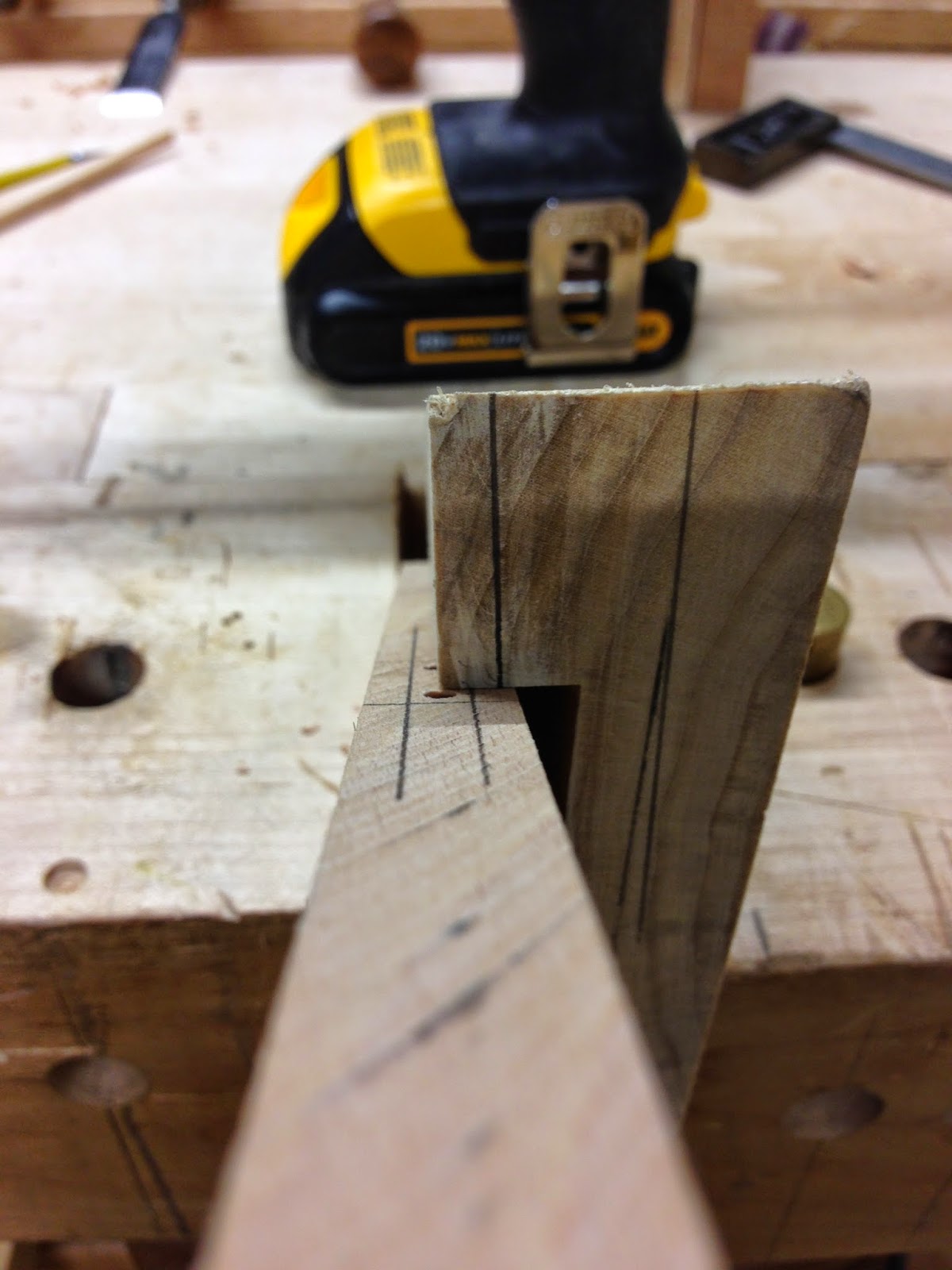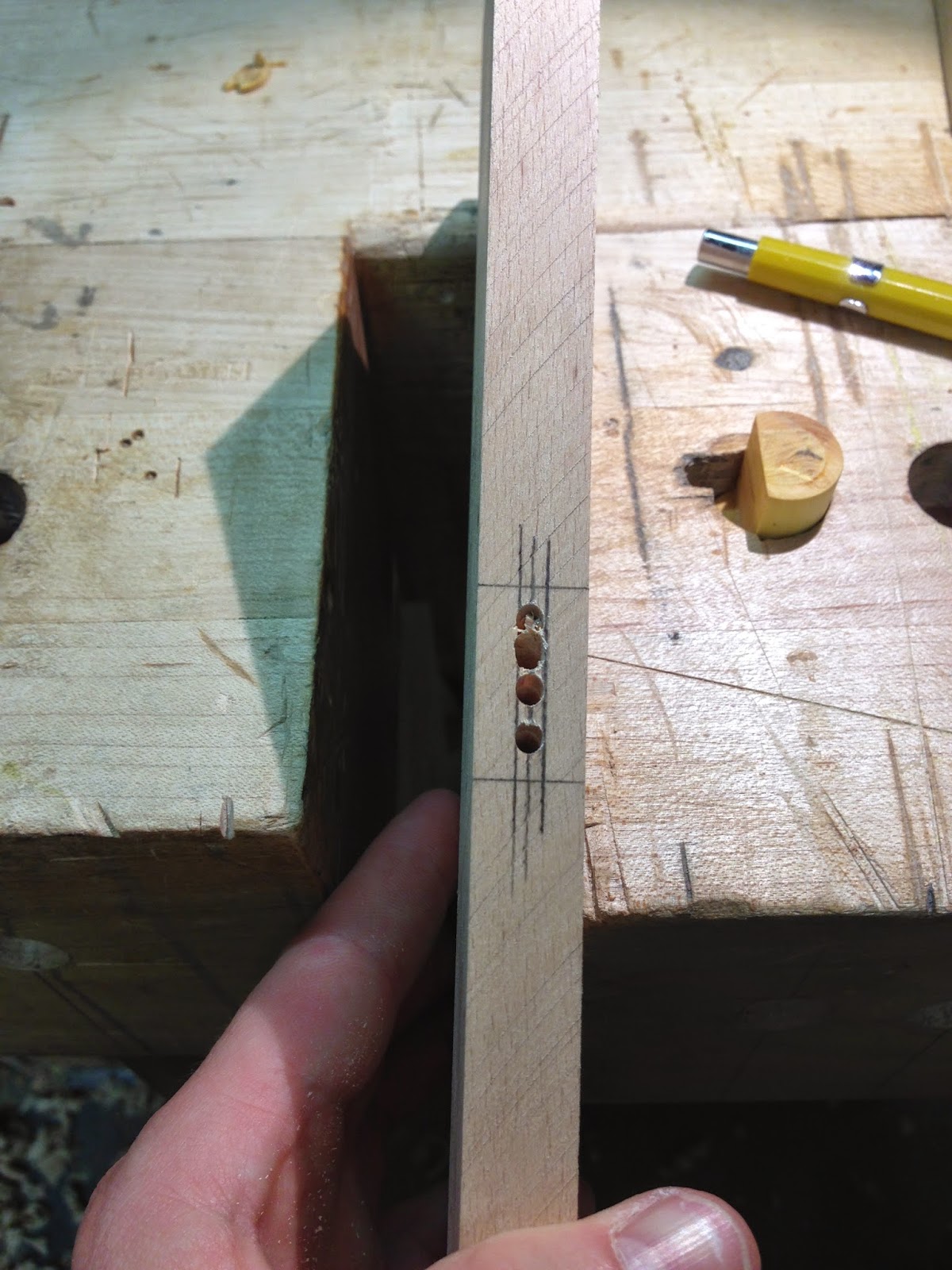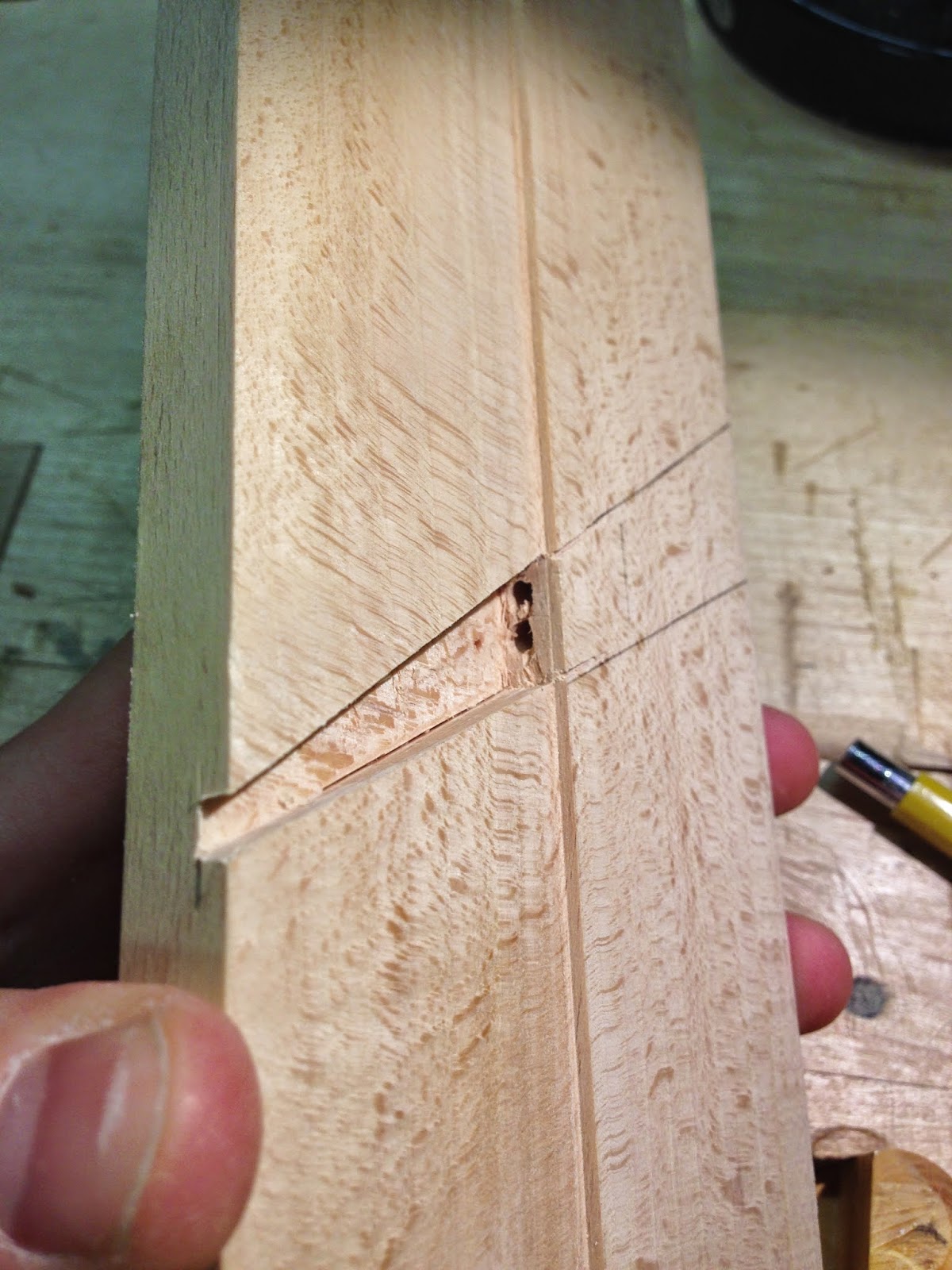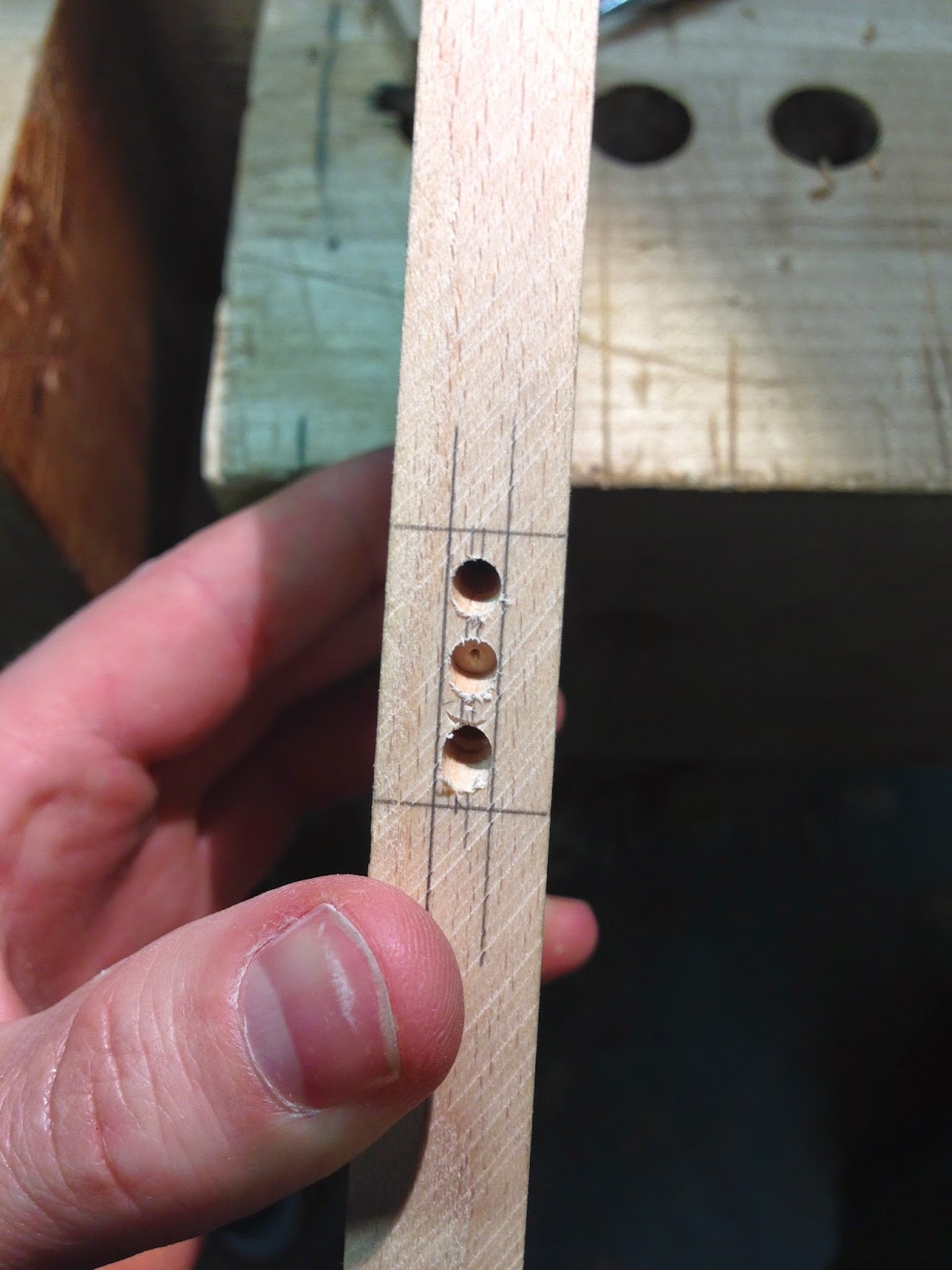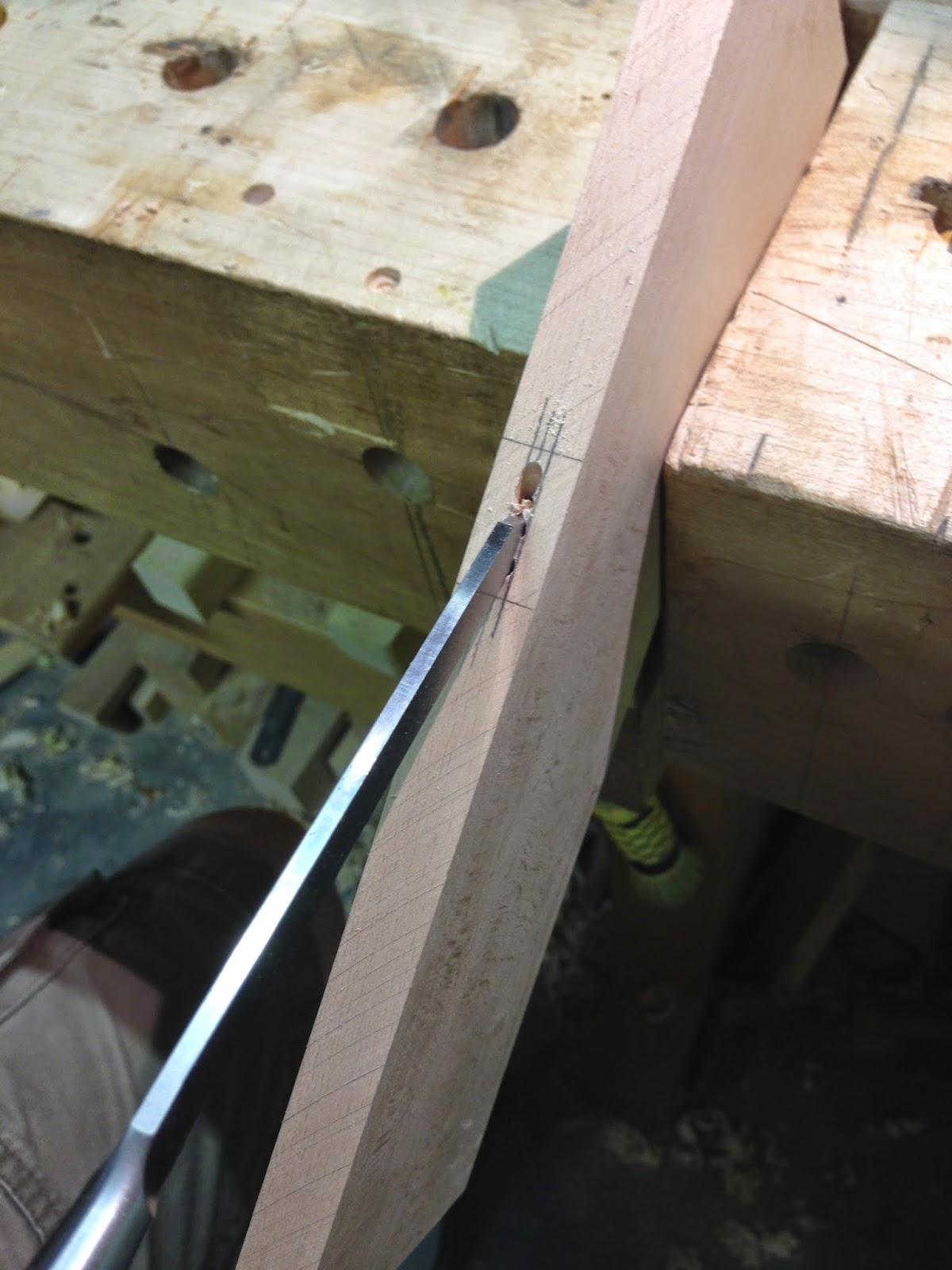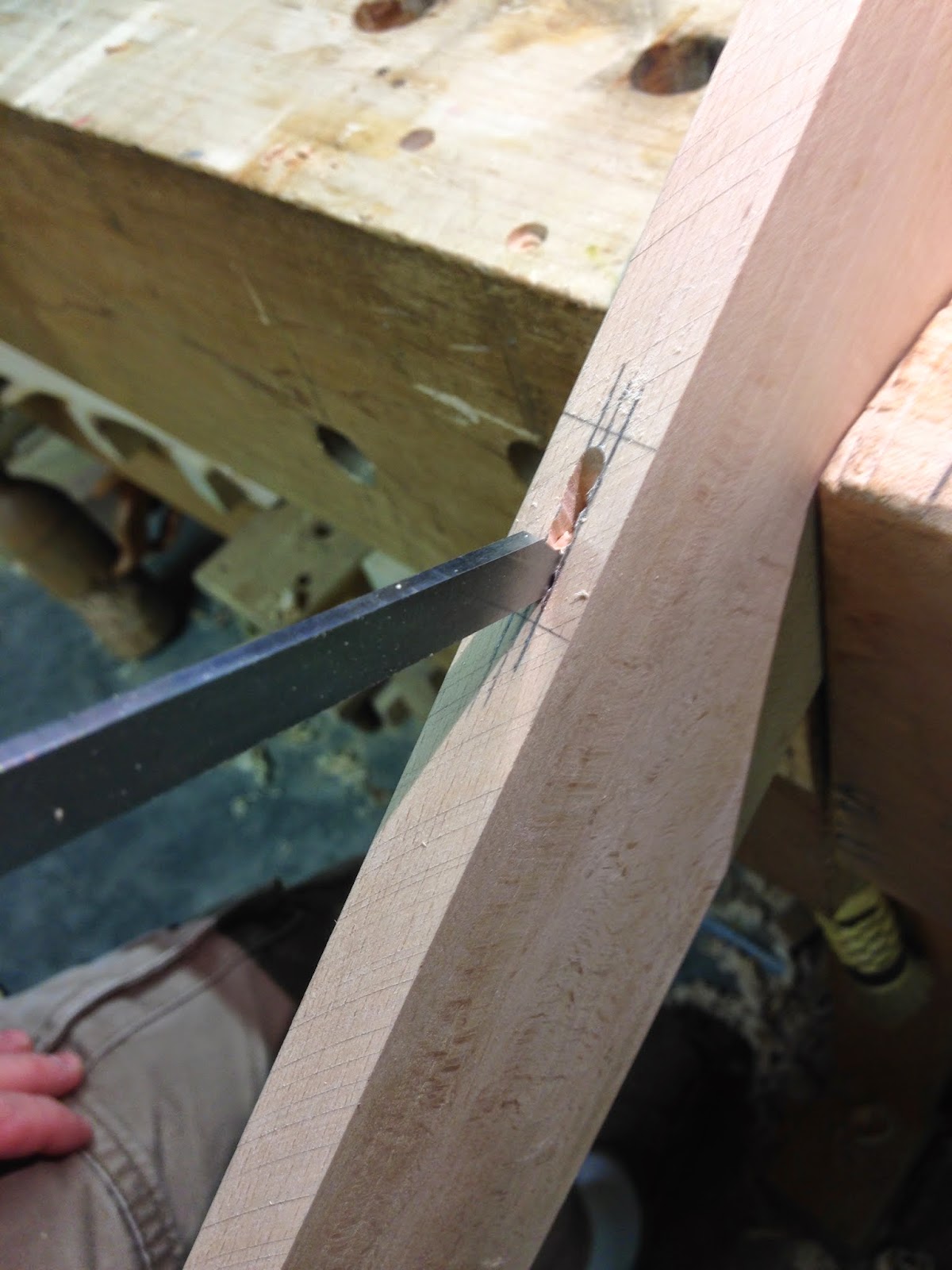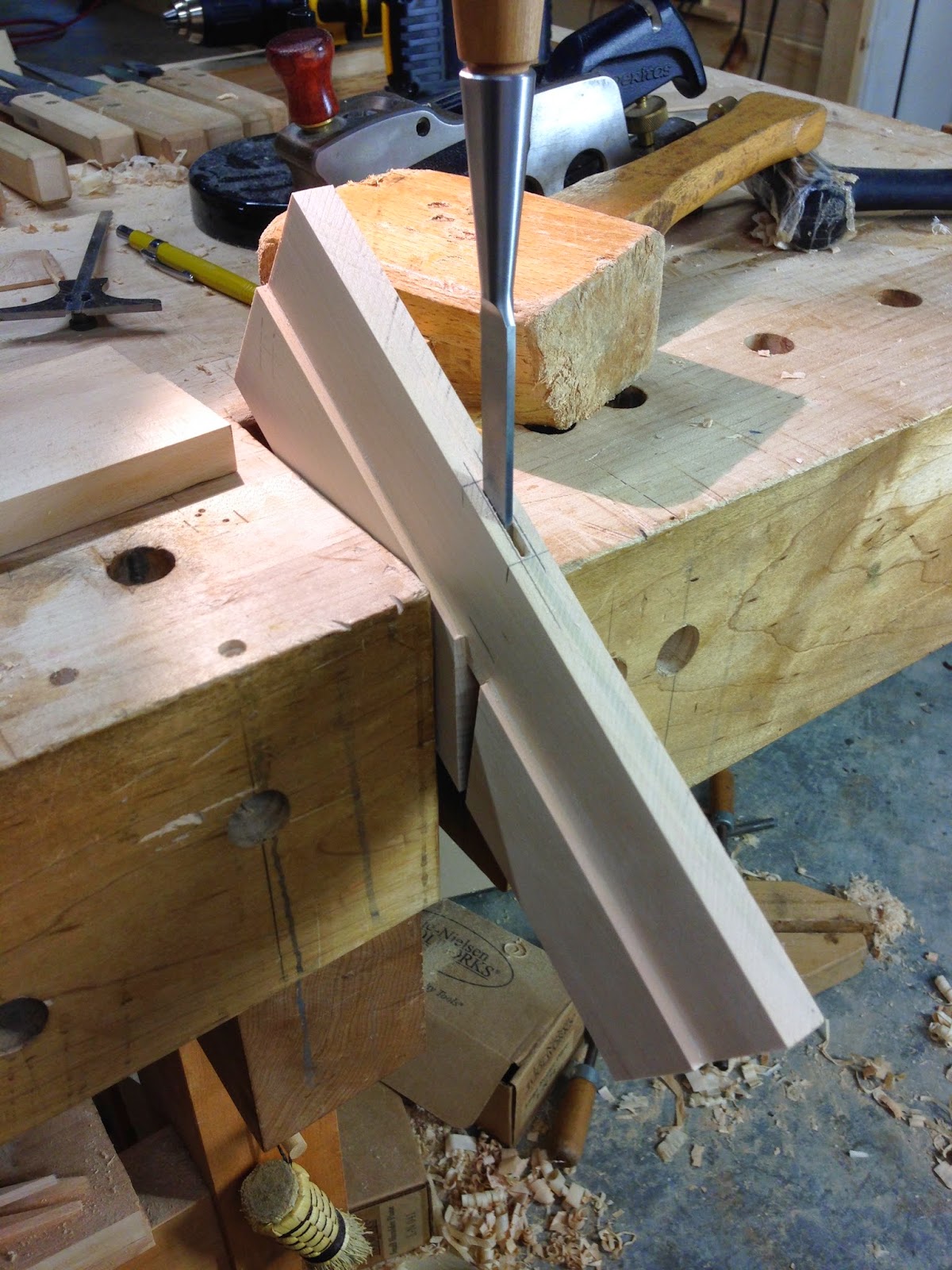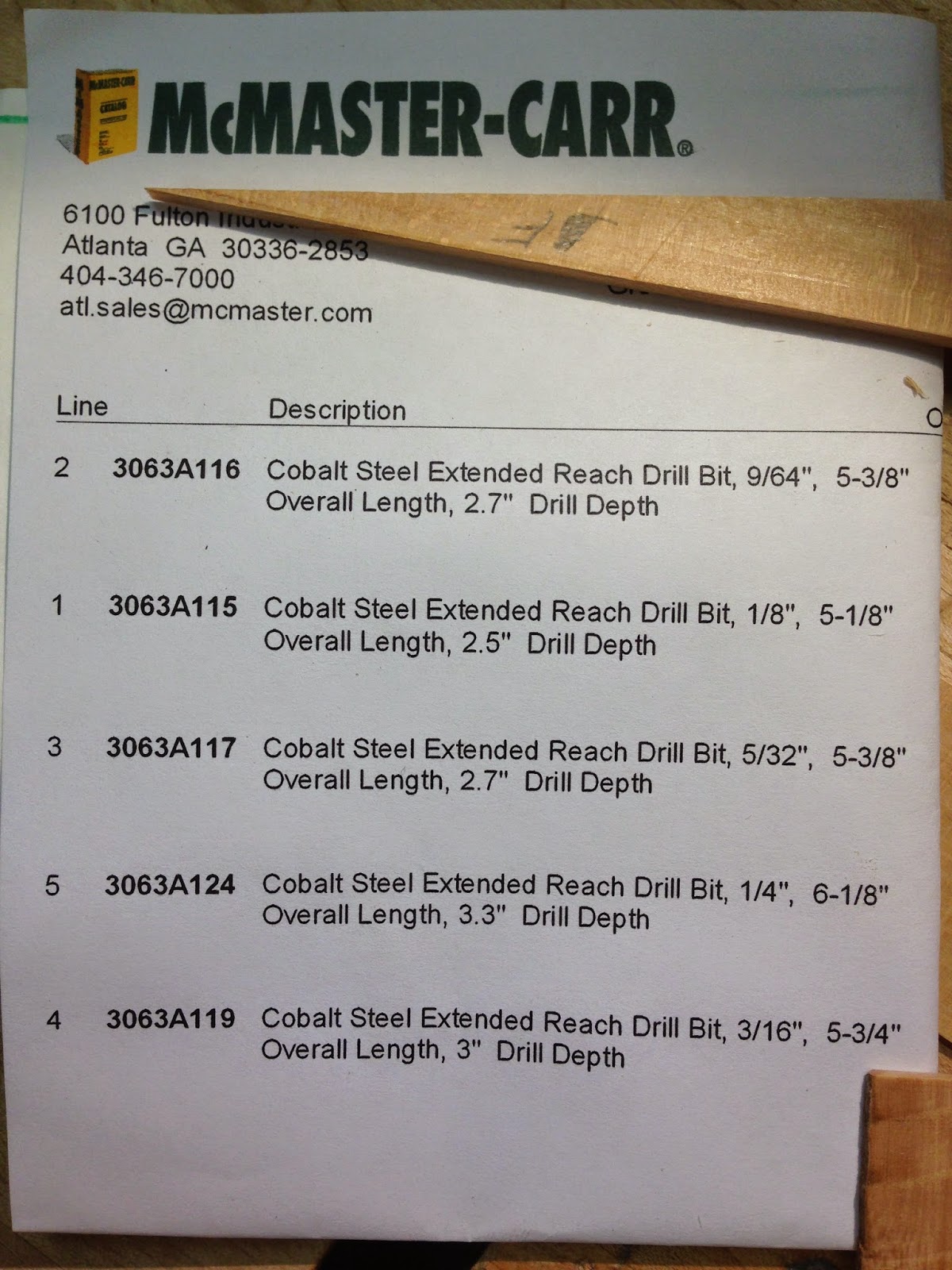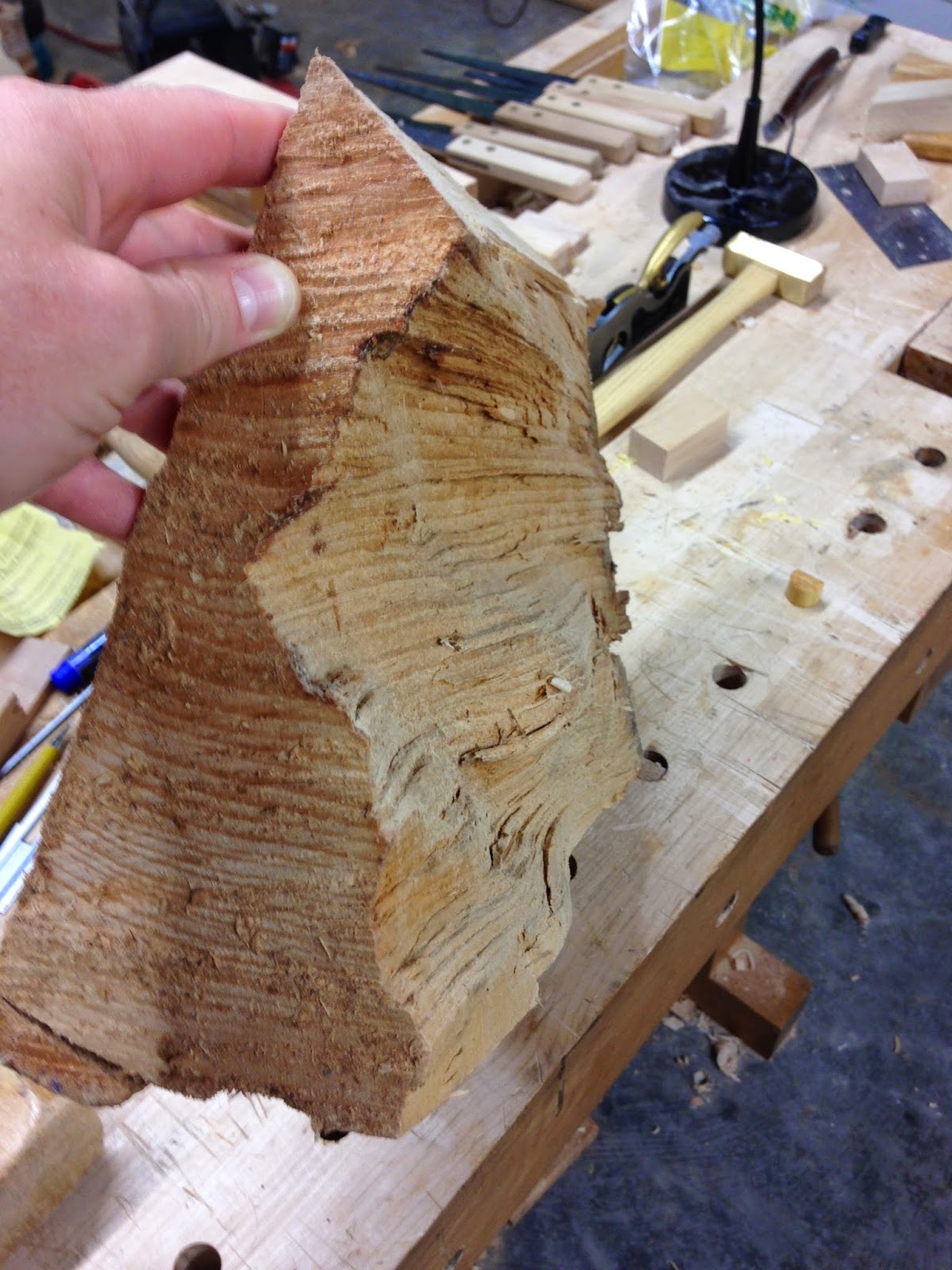Lately I have been doing a bit more custom/complex profiles for moulding planes. I thought I would show you a bit of how I go about doing it. I don't know how the artisans of old did this. It would be interesting to see what they did. Did they cut the profile, grind it, or something else I am not thinking of. I don't guess it matters. I am not constrained by there technology and I am sure if they lived now they wouldn't constrain themselves either for any nostalgic reason. They would probably be excited to see our tooling and put it to use.
Once you have made your complex profile moulding plane with the profile cut in the sole and everything otherwise complete and fitted take your blade and coat it with machinist fluid on the top front edge of the blade, let it dry (duh!). Insert the blade in the plane. Set the wedge, then scribe the profile of the sole onto the blade. Try to do this in one pass, otherwise the scribe line gets harder to clearly see. A single fine line is much easier to track even if it isn't perfect.
Here is what I currently do to cut the profile. I know it will change some as I like to refine and tinker with my methods. I think it is what keeps me interested in the craft. Below is my setup. You need a good light for this kind of work...Oh and coffee too. :)
Once you have made your complex profile moulding plane with the profile cut in the sole and everything otherwise complete and fitted take your blade and coat it with machinist fluid on the top front edge of the blade, let it dry (duh!). Insert the blade in the plane. Set the wedge, then scribe the profile of the sole onto the blade. Try to do this in one pass, otherwise the scribe line gets harder to clearly see. A single fine line is much easier to track even if it isn't perfect.
Here is what I currently do to cut the profile. I know it will change some as I like to refine and tinker with my methods. I think it is what keeps me interested in the craft. Below is my setup. You need a good light for this kind of work...Oh and coffee too. :)
This is a basic jewelers saw that has a 3" capacity. It uses 5" pin less blades. Runs about $40. I cut the profile out of a blank prior to hardening. This is pretty thick material for these little saws. I first used one when I was bout 13 years old. My uncle ran a little shop that sold coins with parts cut out as jewelry and the like. It hit me one day that this would work wonders for cutting complex profiles and it does.
On a Lie-Nielsen tapered moulding plane blade the sides are "hardened" in the production process and so the jewelers saw blades won't cut them. Fortunately this is not a problem since a touch of the grinder creates a nice notch to start the blade in anyways and removes the "hardened" metal.
Now just slow and steady wins the race. The trick to getting these to cut well is to keep the blade from overheating. If it overheats then, like any other cutting tool you are used to, it will not hold an edge. Thus I use a little bit of beeswax on the back of the blade. Yes, I said the back of the blade. If you put it on the front it will clog the relief area behind the tooth and it won't cut.
Once I do this I move onto the grinder to shape the bevel. I have a grinding wheel dressed to sort of a "V" point that is slightly rounded so I can work the hollow of the profile. Work right up to the edge but not past it. It is better to have a small area you need to remove after you harden then to have to re-profile the edge back once you harden it.
By the way the picture is of the bevel side of the blade after hardening and tempering. As you can see all that I had to do to get it sharp was to work just the edge with some slip stones. I have seen many people describe leaving a thick edge on the blade while heat treating or otherwise the edge is weak. I have never had this problem. I think they are not heat treating properly. Very likely overheating the edge and creating poor "grain" structure in the metal which makes it weak. Anyways that is for another post.
Dig deep. Make a complex profile moulding plane. You can do it!
If you haven't seen it then check out my plans for an ogee moulding plane here.
